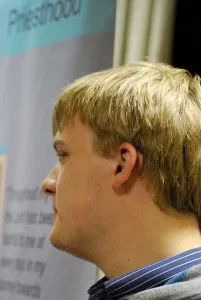Our Lady & St. Sebastian's Catholic Church
About Us
Let us build a house where love can dwell and can safely live,
We are part of the Independent Sacramental Tradition. That means our church is autocephalous—self-governing and not under the jurisdiction of the Roman Catholic Church. Still, we are fully and faithfully Catholic. Our sacramental ministry, theology, and apostolic succession are valid and unbroken, tracing directly back to the apostles. We’re part of the One, Holy, Catholic, and Apostolic Church, even though we are not in communion with Rome.
Instead, Our Lady’s & St Sebastian's have active parishes in Wirral, Yorkshire, and London.
And is in communion with several like-minded bodies, including the Église Catholique Libérale Unie (Uganda) and the Nicene Apostolic Church (England). We have active parishes in Wirral, Yorkshire, and London.
The Church honours the foundational teachings of the Undivided Church. We uphold the decisions of the first seven Ecumenical Councils as well as the Second Vatican Council (1962–1965), whose reforms help shape our contemporary approach to faith and ministry. Our theology is grounded in the Nicene Creed and the Apostles’ Creed—historic summaries of the faith we share with the wider Catholic tradition.
We believe in one, holy, catholic, and apostolic Church. We recognize the pope as the bishop of Rome and respect his role as “first among equals” among bishops. However, we do not accept the doctrine of papal infallibility. Members are free to accept or reject any doctrine declared ex cathedra.
The Eucharist is central to our worship. We celebrate it with reverence and in line with the intention of the universal Church. We affirm the real presence of Christ in the Eucharist—because Christ promised to be present whenever people gather in His name. Belief in transubstantiation is respected but not required; we make space for a range of theological understandings within the bounds of the Catholic tradition.
The Patriarch of Our Lady’s & St Sebastian’s Catholic Church is His Eminence, Cardinal Kieran Thomas O’Neill, MStJ, KGC, DD, OSB.
At its heart, our Church seeks to live out the sacredness of Christian life—within each soul and out in the world—faithfully, freely, and with deep respect for the mystery and grace of God.
If you feel called to the priesthood, diaconate, the Clerical progress within the Church. We would like to hear from you! We welcome applications for both ordination and incardination from older people as well as the youthful. are open to all people of good will – men and women, heterosexual or LGBTQI, married or single.
“Our Lady & St Sebastian's Catholic Church is welcoming church is source of peace and shared happiness”. to all God's children. We Preform marriages for all with the rite prescibed by the church.
Our Lady's & St Sebastian's Catholic Church maintains a zero tolerance policy in regard to any form of violence, discrimination or abuse.
About Today
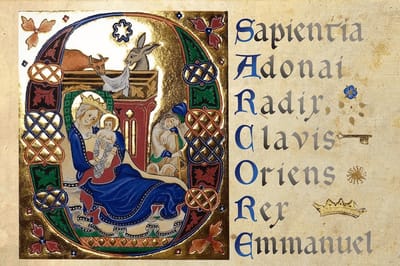
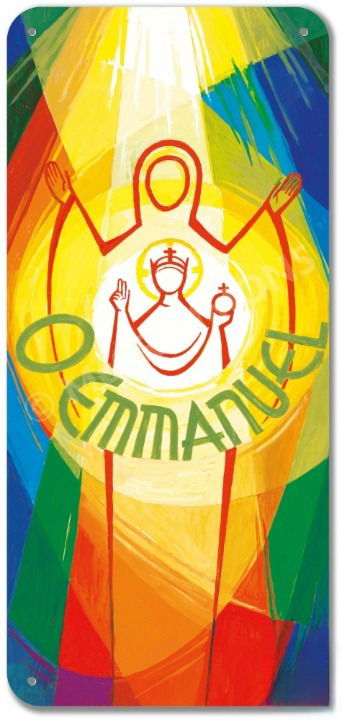

23 December (optional commemoration of Saint John of Kęty, Priest)
The Lord is at hand: come, let us adore him.
Year: A(II). Psalm week: 4. Liturgical Colour: Violet.
O Emmanuel!
O Emmánuel,
rex et légifer noster,
exspectátio géntium et salvátor eárum:
veni ad salvándum nos,
Dómine Deus noster.
“O Immanuel, you are our king and our judge, the One whom the peoples await and their Saviour. O come and save us, Lord our God.”
One by one the symbols and prefigurations have passed before our eyes and each one has been set in its context, given its true meaning as a sign pointing to what is about to happen at the invisible turning-point of the history of the world. But the time for signs has passed. The title “Emmanuel” says “God-With-Us”, simply, straightforwardly, literally. We say openly what we want. “Come and save us!” That is all.
“The maiden is with child,” says Isaiah, “and will soon give birth to a son whom she will call Immanuel.”
Looking back on the O Antiphons, from the last to the first, they will acquire a familiar ring to speakers of English. We sing them, in that reverse order, in the hymn “O come, O come, Emmanuel”.
In Latin, the more cryptically minded can take the first letter of each of the titles given to Jesus, again from last to first, to get E R O C R A S. That is, ero cras, “I will be tomorrow”. It is possible to believe that this is a coincidence or even that there is something undignified about playing with letters in the face of God. On the other hand, in the Eastern Church, acrostics are used as a vital part of the liturgy: they are characteristic in particular of the form of hymn called a kontakion. Perhaps this civilised habit rubbed off, many centuries ago, on the muddy, half-barbarian West. In any case, even the Jews did it: there are several psalms which are a sequence of meditations strung together in alphabetical order. If the earth and stars, the sun and moon, are singing the praises of the Lord, there is surely nothing wrong in making the letters of the alphabet do the same.
We have come to the end of the sequence of seven ancient antiphons. It may seem as if the countdown has ended early. After all, tomorrow is only the 24th. But this is a reminder that on truly important days we are still Jews, and the day starts at nightfall of the evening before. The 24th of December has no Vespers. The Vespers of that evening are the First Vespers of Christmas. And in many Christian countries children will be sitting staring out of the window waiting for the first star to appear so that the celebrations can begin.
St John of Kęty (1390 - 1473)
He was born in Kęty in the diocese of Kraków in 1390. He became a priest and for many years taught at the University of Kraków; later he became parish priest of Olkusz. He taught and researched in both physics and theology and excelled in holiness and in charity towards his neighbour, in which he was an example to his colleagues and pupils. He died in 1473. See the articles in the Catholic Encyclopaedia and Wikipedia.
Zechariah wrote on a tablet 'His name is John'
Gospel:Luke 1:57-66
The time came for Elizabeth to give birth, and she bore a son. And her neighbours and relatives heard that the Lord had shown great mercy to her, and they rejoiced with her. And on the eighth day they came to circumcise the child. And they would have called him Zechariah after his father, but his mother answered, ‘No; he shall be called John.’ And they said to her, ‘None of your relatives is called by this name.’ And they made signs to his father, enquiring what he wanted him to be called. And he asked for a writing tablet and wrote, ‘His name is John.’ And they all wondered. And immediately his mouth was opened and his tongue loosed, and he spoke, blessing God. And fear came on all their neighbours. And all these things were talked about through all the hill country of Judea, and all who heard them laid them up in their hearts, saying, ‘What then will this child be?’ For the hand of the Lord was with him.
Reflection on the painting
Before a child is born, parents reflect carefully on the name they will give their son or daughter. A name is not chosen lightly; it becomes part of a person’s identity for life. Our baptismal liturgy recognises the importance of a name when the priest asks, “What name do you give your child?” In today’s Gospel, we witness a moment just like this. Elizabeth, with calm conviction, announces that her son will be named John. Her choice astonishes the gathered relatives, since the name held no family precedent. Yes, different people will have different ideas about a good name for the child. Yet the name of John name is confirmed by Zechariah, who writes it boldly on a tablet. It is the name entrusted to them by the angel Gabriel. Hebrew names often carry deep theological meaning, and John means “God is gracious.” The child born to Zechariah and Elizabeth would prepare the way for the Lord who ushers in a new age of grace.
This grace is exactly what we celebrate at Christmas. As the angels proclaimed to the shepherds, “Peace to those on whom God’s favour rests.” With the birth of Jesus, God’s gracious favour rests not just on the Holy Family, but on all humanity. We, too, are “highly favoured” because of the One whose path John the Baptist prepared. At Christmas, we pause to treasure this grace. But this season invites us to do much more than simply receive God’s favour; it calls us to share it! Having been touched by God’s graciousness, we are sent to extend that same grace, through kindness, generosity, forgiveness, and love.
Jan Lievens’ painting of Zechariah in the Temple is a remarkably simple and restrained painting. The palette is muted, dominated by warm browns, soft ochres, and gentle shadows, giving the whole canvas a contemplative stillness. There is no dramatic architectural backdrop, no flourish of colour. Only Zechariah is enveloped in a tender, subdued light, saying quietly his prayers by the altar. This simplicity is deeply reminiscent of Rembrandt, and not by accident: Lievens and Rembrandt were contemporaries, trained together in Leiden, influencing one another in their early years. The shared sensitivity to light and quiet dignity of their figures, all these echo their artistic kinship.
Zechariah in the Temple,
Painting by Jan Lievens (1607–1674),
Painted circa 1640,
Oil on canvas
© Wawel Castle, Kraków, Poland

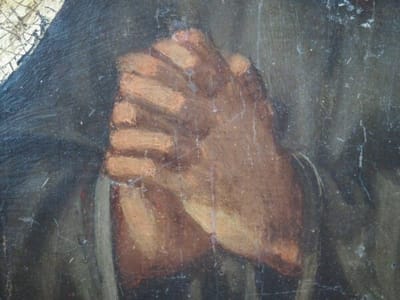
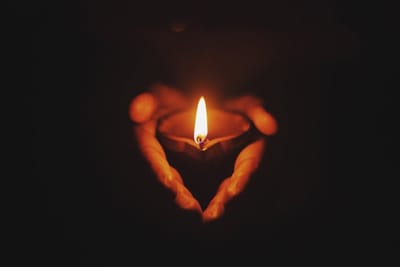
At Our Lady & Saint Sebastian's Catholic Church, we believe in the power of prayer to bring comfort, healing, and hope to those in need. Our prayers are a reflection of our deep faith and our commitment to supporting and uplifting each other in times of joy and challenge.
We pray for all those who have sied in Australia, terrorist attack RIP
We pray for His Beatitude, Major Archbishop-elect NICHOLAS Anthony, Archbishop of the United American Orthodox Catholic Church Let us pray Fr. Roger Clark, Fr, John Gordon, Fr Jeffery Leach, Fr Nick Lowe, Sean McKenna, Jack Quinn, Hesketh Family, John and Bridget Mongan, Alan Willkison, Matthew Leach, Mike Lowe, Carol Clerkin, Karen & Steve Sarion, Peter Burke, Dominique Kambala, Joan Turner, Tony Melay, Mike Plke, Mrs Atherton and Barry Atherton, Bernard MCovle, Geffey Atherton.Jonathan Bennett-Hughes., Michael Cormier, Anne Hardman. Rev. Cliff Jones, Julie Murton. Sr Bridget., Linda White, Ann Forster
Let us pray for the poeple who died or injured in Hong kong fire, also those ivolved in the catastrophic flooding in Asia.
We Pray for all those who are or sick at home/in hospital/Nursing care. We ask for God's blessing are the doctors and nurses and key workers, and all those whom look after the sick.
- We pary also for peace in the world especially to Ukraine, the Middle East, Sudan, and Myanmar Syria. Afgan earthquake.
- We remember those who have died: Jim Mcaleese, Frank Jones. Eileen.
- We also Pray for our famlies and friends who have gone before us.
Resquiescat in pace+
Prayer Request
december 2025- Liturgical Calender
December 2025
| Sun | Mon | Tues | Wed | Thurs | Fri | Sat |
Join us
- Birkenhead, England, United Kingdom
- CH41 9DS
Gifting
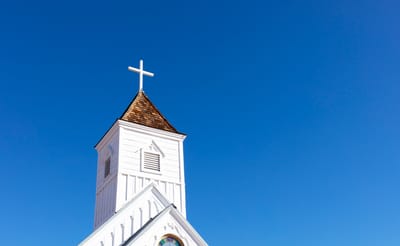
Church Mews
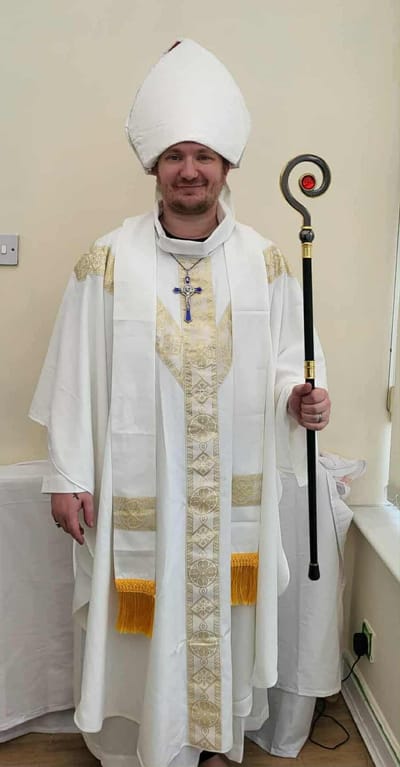
Today we are delighted to share the news that Mgr Ales Ryder has been appointed Bishop of the Wakefield Vicariate. He will also serve as Lead Bishop for Safeguarding within our Church.
Bishop Ryder’s ministry has always shown a deep care for people and a strong commitment to making the Church a safe and welcoming place for all. We give thanks for his “yes” to this new responsibility and pray that the Holy Spirit will guide him in the years ahead.
Please keep Bishop Ryder in your prayers as he begins this new chapter of service.
Prayer for Our New BishopLord Jesus, Shepherd of Your people,bless Bishop Ales Ryder in his ministry among us.Grant him wisdom, courage, and a heart full of compassion,that he may lead with faithfulness and joy.Through Christ our Lord. Amen.
Parish BlessingMay the Lord bless Bishop Ryder and all our parish family.May His light guide our steps, His peace dwell in our hearts,and His love be the bond that unites us.
church Team
His Eminence, Cardinal Kieran Thomas O’Neill, MStJ, KGC, DD, OSB.
Patriarch
Based on the Wirral
Right Rev Alex Ryder
Bishop of the Wakefield Vicariate- West Yorkshire
Lead Bishop for Safeguarding within our Church.
Stafford Patrick Cunningham
Acolyte, Deacon Elect
London
Seven Ways to Observe Advent with Children
Finance and Mission
An interesting aside evolving from our voluntary status is that there are no arguments about property or money in our church, which some find a refreshing contrast. Our church canons forbid the church entity to receive or give money, so the church is unable to give money to 'good causes' and does not receive either.
Our clergy support their ministries through their secular work, and in some cases are of independent means. Some have ecumenical ministry too, earning from funerals, weddings and life-state services for standard fees. Our clergy have a deep connection with those they serve as they too are exposed to the pressures and situations of working life; it makes our clergy 'connected' and helps them in their pastoral care.
Frequently Asked Questions
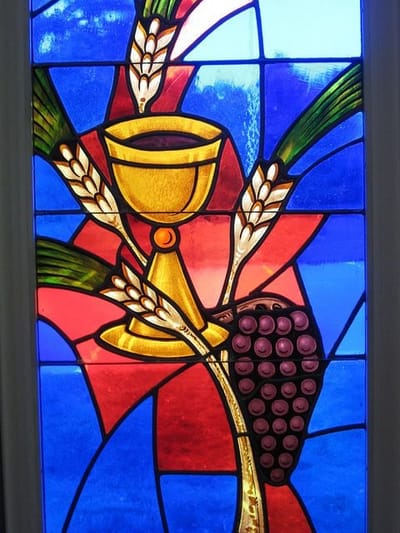
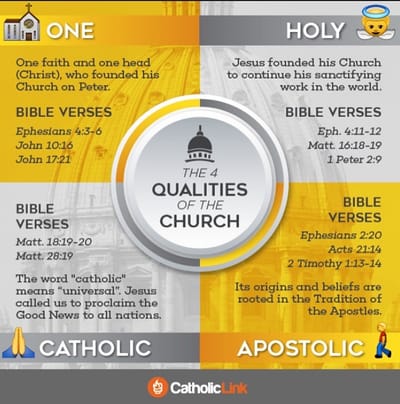
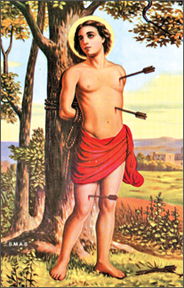
The following Frequently Asked Questions have been formulated as a primer for better understanding Independent Catholicism. Though we present here a brief summary of an extensive body of literature, we certainly invite you to perform your own research of these questions and to follow your conscience with respect to the answers with which you feel most comfortable.
Is Independent Catholicism even Catholic?
Yes, definitely. There are several expressions of Catholicism, and many Catholic churches comprise the "one, holy, catholic and apostolic Church" that is professed by all.
In the Western world, the largest and most well-known expression of Catholicism is the Roman Catholic Church. In Asia and Eastern Europe, however, the most well-known expression of Catholicism is the Orthodox Catholic Church, which possesses over 300 million adherents and which excommunicated the Roman Catholic Church in 1054 A.D. for its deviance from the ancient creed of the Church, its insistence on unleavened bread, and its imposition of the novelty of clerical celibacy.
What do all Catholic churches have in common?
All Catholic churches, and indeed most Christian churches, profess faith in the "one, holy, catholic and apostolic Church."
Relating with one another as sister churches, these members of the universal Church believe that by baptism, we become members of the one Body of Christ and are nourished by the eucharist. The apostolic faith that has been handed down to us also teaches that there are other sacraments that we celebrate during important moments in life.
Like sisters in the same family, these churches share various similarities, and yet they are all different. As sister churches, most of our differences are administrative and disciplinary, but some of our differences are ecclesiological and theological. Differences are to be expected; not all sisters are the same.
Still, we are united by those bonds that we all hold dear: baptism, eucharist, and apostolic succession.
What does it mean to be one?
We often use a capital "C" when we refer to the universal Church (viz., the Body of Christ, which is composed of all sister churches), and with humility we use a lowercase "c" to refer to the many, particular churches to which we belong (unless used as a proper noun).
Despite any divisions that might exist, we recognize that all our sister churches belong to the one, universal Catholic Church. As such, despite our differences, we all form part of the People of God. Christ is the vine, and we are the branches (Jn 15:5). Christ is the head of the body, the Church (Col 1:18), of which we are all members (1Cor 12:12-27). We celebrate our unity (Gal 3:28), and we recognize our diversity (Rom 12:4-8).
What does it mean to be holy?
As individuals, we are simultaneously sinners and saints. We know that in our history, the same can be said of the institutions that are comprised of human beings. In the name of supposed good, our institutions have historically upheld narrow views, hosted inquisitions, waged crusades, advocated for slavery and the repression of various voices, and eliminated entire cultures. Despite this, we know that the work of redemption is somehow being carried out in us. Even though we sometimes stumble and get off track (Lk 15:13-17), we ultimately desire to keep turning toward that loving and compassionate mystery, which is God (Lk 15:20-24).
What does it mean to be catholic?
According to the Greek root of the word, to be "καθολιχοζ" is to be "whole" and "complete.” Yes, as St. Irenaeus suggested, every Catholic community is whole and complete in itself! In a cosmological sense, we also interpret this word as meaning "universal." We use the word "catholic" of our Church because we believe that it is completely and wholly that which God intends for God's Holy People.
No single branch (or church) within the universal Church can claim exclusive rights to the name "catholic," and no single branch can pretend to be the Vine, from which other branches have been "cut off" (Jn 15:5-6). Christ alone is the Vine; all authentic branches partake of the meaning and challenge of being part of the Vine, and all bear great fruit (Jn 15:7-8).
Humility demands that we continually reflect on the deep significance of Christ's words: "I have other sheep that are not of this flock. Them, too, I must bring, and they shall hear my voice, and there shall be one flock and one shepherd" (Jn 10:16).
What does it mean to be apostolic?
By word and deed, we cling to and stir into flame the faith handed down to us by the apostles (2Tim 1:6). These apostles planted various churches as they preached the gospel throughout the world. Though these churches have varied in expression throughout the ages, depending on the context in which they sprang up, they all trace their lineage to the apostles. Some of these local churches eventually yielded to Roman Catholic or Orthodox Catholic authority, while others continued to strive to live out the authentic message of Christ in their own way. By tracing their apostolic succession--their lineage back to the apostles--these churches confirm that they continue to pass on the gift of the Spirit that was received by validly consecrated ministers who, in turn, share the gift of that Spirit with other ministers.
How have divisions affected this one, holy, catholic and apostolic Church?
Despite St. Paul's vision that we are "all one in Christ Jesus" (Gal 3:28), a split within the Church occurred in 1054 A.D. Though the five patriarchs of the Church historically worked together to formulate doctrine, the Patriarch of Rome (now known as the pope) tampered with the Church's creed, thus changing the Church's Trinitarian theology. In what is now known as the East-West Schism, the Patriarch of Constantinople excommunicated the Patriarch of Rome, and the Patriarch of Rome excommunicated the Patriarch of Constantinople, leading to the creation of the Orthodox Catholic Church (i.e., the church perceived to be orthodox and in communion with tradition and with the four patriarchs of the East) and the Roman Catholic Church (the church that aligned itself with the independently-acting Patriarch of Rome). Interestingly, no one thought of the nascent Roman Catholic Church as a new "church." Rather, beginning with that split, the universal Church now had two valid expressions of apostolic Catholicism.
After 1054, the next great divide within the Church occurred in 1517-1521, when a Catholic priest, Father Martin Luther, began raising questions about the sale of indulgences (viz., time out of purgatory, a concept that was made doctrine in 1274). Recall that indulgences were being used to finance the construction of the largest church in the world, St. Peter's Basilica in Rome. This difference in perspective on such issues as indulgences led to a division between "Roman Catholics" and "Reformers" (or "Protestants," as they would come to be called by adherents of the Roman church).
Three centuries later, another significant split occurred when the Patriarch of the West (now known as the pope) pushed for the declaration of his own infallibility (1870). He had split the Roman church with his proclamation of the Immaculate Conception (1854) and believed that the solution lay in declaring himself…infallible! More recently, divisions in the Church have occurred over such issues as contraception (1968) and the place of women within the Roman church (1994).
Despite these events, bishops who were validly consecrated through apostolic succession have continued to share the gift of the Spirit with others, and the ministry of the Body of Christ has continued. The Church is comprised of individuals who are at once saints and sinners. They are human beings who, like Peter, the Rock upon which the Church was built, have at times denied Christ (Mt 26:74-75), and/or who, like James and John, have sometimes jockeyed for positions of supposed power (Mt 20:20-28). Fortunately, the love of Christ continues to unite us all and lead us as the sinners-and-saints we are!
How can Our Lady & Catholic Churches claim to be apostolic churches?
The litmus test of any Catholic church is apostolic succession. Most Independent Catholic bishops are validly consecrated by other bishops possessing valid lines of succession from the apostles, including the lines of apostolic succession from the Roman Catholic Church, the Old Catholic Church, the Malankara/Syrian/Jacobite Churches, and various Orthodox Churches.
What is the Old Catholic Church and what is its place in Independent Catholicism?
The Old Catholic Church is the branch of the Church that traces itself back to the act of a Roman Catholic bishop, Dominique-Marie Varlet, who validly consecrated other bishops without the permission of the Vatican, beginning in 1724. It solidified nearly 165 years later various bishops questioned the pope's attribution of infallibility to himself in 1870.
Many people today are familiar with the Second Vatican Council (1962-1965), which greatly reformed our views of the Church. Less people are familiar with the First Vatican Council of 1870, when Pope Pius IX convinced his brother bishops to approve for him a doctrine of "papal infallibility" (viz., that the pope, acting alone in matters of faith and morals, might be "infallible"). For many bishops, this Gnostic heresy compounded the problem previously caused by Pius IX when he declared in 1854--more than 1,800 years after the fact--that the Blessed Virgin Mary was conceived without sin. Ironically, "papal infallibility" was intended to heal the division in the Roman church that resulted from the proclamation of this "dogma"; instead, it further divided an already divided church!
In the tradition of the Church, the statements of one man [in the case of the Roman church], regardless of who he was, were never to be held with the same esteem as the statements of an ecumenical council, when all the bishops met together to discuss matters of faith and morals. Those who could not accept this novel teaching on "infallibility” separated themselves from the Roman church and self-identified as Old Catholics, a term to capture their belief that they were being faithful to the traditional beliefs of the ancient Church (viz., that the bishops were to act together in deciding matters of faith and morals).
The Union of Utrecht of Old Catholic Churches was officially formed in 1889, when the Old Catholic Congress produced the Declaration of Utrecht, a document explaining the issues that caused the bishops' separation from Rome. The Diocese of Utrecht possessed the right of electing and consecrating its own bishops without the pope's approval (first, through a privilege extended by Pope Eugene III in 1215, then confirmed by the Fourth Lateran Council in 1225, and later affirmed by Pope Leo X in 1520). The bishops and priests who signed the Declaration of Utrecht were now de facto independent from the Roman church. The Old Catholic Church quickly grew to 15 million members worldwide by 1900. In the U.S., those of the Old Catholics tradition of Western Christianity often refer to themselves as Independent Catholics, so as not to confuse people who might otherwise think that they belong to the Union of Utrecht of Old Catholic Churches. Technically, there are no Old Catholic clergy in the U.S. at present: The Union of Utrecht of Old Catholic Churches possesses no clergy or congregations in the U.S. There are, however, a number of Independent Catholic clergy who self-identify, for whatever reason, as “Old Catholic."
While some critics have blamed Independent Catholics for "fracturing" the Church, others see them as faithfully attempting to unite the Church by laying aside the false pretences that demand rigid conformity to one man's beliefs or opinions. Regardless of one's views on this, the Old Catholic Church and the Independent Catholic tradition continued to share valid lines of apostolic succession from the Roman church and other Catholic churches.
I've never studied Church history so deeply. This is all new to me. So, how do we view the pope today?
We esteem the pope, and we give him the respect due him as the Bishop of Rome, the Successor of St. Peter, the Prince of the Apostles, and the Patriarch of the West. In the college of bishops, he is considered the "first among equals."
It's simply the case that we understand history, and we view him as being on par with the other four traditional patriarchs of the Church (in Alexandria, Antioch, Constantinople, and Jerusalem). We understand that, historically, the Patriarch of Rome was the first of the five patriarchs to amass sufficient power and wealth to "support" his positions, create his own city-state, and enter into diplomatic relations with innumerable nations.
Regardless, we continue to believe in the age-old tradition of the Church, that there is greater wisdom in the collective action of bishops who work together to resolve issues of faith and morals, rather than allow one man, regardless of how informed he believes himself to be, to work alone in such matters.
We believe that sadly the doctrine of papal "infallibility" has reinforced the authoritarianism, the misuse of power, and the demand for blind "obedience" that can run contrary to the teachings of Christ. Though the notion was initially an effort to create unity within the Church, the doctrine of "infallibility" had the opposite effect, which is evident in such papal pronouncements as the supposed evil of contraceptives and the non-debatable matter of the ordination of women within the Roman church. In this sense, the words of one man (viz., the pope) have been more sectarian and divisive, than unitive and catholic.
What does Our Lady & St Sebastian’s Catholic Church believe?
Squarely within this tradition of Independent Catholicism, Our Lady & Saint Sebastian’s Catholic Church in the UK affirms traditional Catholic beliefs of faith and love, spirituality, community, and prayer. We celebrate the seven sacraments and adhere to essential Catholic doctrine and practice, as expressed in the statements of the Second Vatican Council and the best of contemporary thought.
We proclaim the unconditional love and compassion of God, which embraces every human person regardless of his/her condition in life. We acknowledge the primacy of the Gospel of Jesus Christ and the power of the Holy Spirit to speak in our day through the sensus fidelium ("sense of the faithful"), leading to a world of justice and peace.
As our parish mission suggests, we seek to be "Loving. Catholic. Inclusive. Doing It Jesus' Way!"
How is Our Lady's & St Sebastian’s CC different from Roman Catholic parishes?
We share many of the theological and moral teachings of the Roman church, with a few important differences:
Christ's law of love for God and neighbour (Lk 10:27) is our supreme command. For this reason, we do not judge, especially with respect to complex moral questions. Rather, we affirm the dignity of all human persons regardless of race, national origin, religious affiliation, gender, or sexual orientation. We strive for justice within the universal Church and the world. We work together to build community as faithful, clergy and bishops, united as family in loving concern for each other, working together to live the scriptural command of love in our daily lives, and bringing the love of Christ to others. In all, we recall the ancient wisdom of the Church as expressed in the words of St. Augustine: "In essentials, unity; in non-essentials, liberty; in all things, charity."
A Post-Vatican II theology, ecclesiology, and liturgy. We believe that the Second Vatican Council (1962-1965), the last ecumenical council of the Roman church, was a great source of wisdom and inspiration, at which the Holy Spirit was very active and present. We are heirs of the legacy of that ecumenical council, and we commit ourselves to the ongoing implementation of its teachings. Saint John XXIII, who convened the council, wisely observed that the Church is a garden and not a museum. We believe that the Spirit is very much alive and active among all the members of God's Holy People.
The nobility of the laity and the recognition of the priesthood of all believers. Many people are familiar with the oppressive structures and strictures of the top-down papacracy of the Roman church. In contrast, Our Lady's & St Sebastain’s CC fosters a congregational or shared model of leadership, where all God's Holy People join together to discern the movement of the Holy Spirit. As the bishops at the Second Vatican Council affirmed, "Upon all the laity, therefore, rests the noble duty of working to extend the divine plan of salvation to all [persons] of each epoch and in every land. Consequently, may every opportunity be given [to the laity] so that, according to their abilities and the needs of the times, they may zealously participate in the saving work of the Church" (LG 33).
Support through difficult life decisions. We reject legalistic moral pronouncements, often dictated by those in power for the purpose of maintaining power and control. Difficult decisions in life are always harder to make alone; at such times, the compassionate support of a community of faith can be crucial. Yet such support can be difficult to find in the face of moral pronouncements regarding such issues as divorce and re-marriage, birth control, sexual orientation, and complex medical issues. One case in point is the divisive issue of contraception. In the Roman church, artificial means of birth control have been banned by celibate, male bishops, but, according to the Guttmacher Institute, are currently used by 98% of Roman Catholic women ages 15-44 who are sexually active. We believe that members of the laity are endowed with great wisdom and that the responsible limiting of the size of one's family is an issue of conscience to be decided by couples. We believe that artificial contraception, if used responsibly, can be a positive good, a means of increasing the frequency of the gift of sexual union, reducing the incidence of abortion for unwanted pregnancies, and limiting the spread of sexually-transmitted disease.
Our spirit of inclusivity includes the sacraments of the Church. We do not see it as our role to judge and exclude others from Christ's sacraments. We wage no "wafer wars," contemplating from whom we should keep the eucharist. We do not refuse the sacraments of the Church to people based on marital status, living condition or sexuality. We recognize that Christ sat down to eat with sinners (Mk 2:16), and that all are welcome at the table of the Lord. Finally, we recognize that imposing excessive requirements in order to receive the sacraments of the Church is a heresy, condemned by the early Church as semi-pelagianism.
Our spirit of inclusivity includes women, and we embrace the wonderful gifts of women. We are aware of the scriptural tradition of deaconesses in the Church (Rom 16:1), the role of women in ordained ministry in several contemporary Catholic churches, and of the women who have been ordained as priests within the Roman Catholic Church, even as late as 1970 with the ordination of Ludmila Javorova and 2002 with the ordination of the “Danube Seven” seven Roman Catholic women who were ordained by a Roman Catholic bishop. Far from prohibiting conversation on the possibility of ordaining women for ministry in the Church, we recognize this as an injustice which unfairly diminishes women within our Church and our world. Instead, we openly welcome the movement of God in the ordained ministry of women.
Our spirit of inclusivity includes a non-celibate clergy. Like most Catholic and non-Catholic traditions, we recognize the invaluable gifts possessed by married clergy. We know that a celibate clergy is not a divine mandate, but a recent innovation in the Roman church. Our sisters and brothers of the Orthodox Catholic Church (which excommunicated the Roman church in 1054) have always allowed priests and bishops to be married. Likewise, following the longer and larger tradition of the Church, our clergy are not required to be celibate. Rather, we welcome clergy who are married, in domestic partnerships, divorced or widowed. Christ built his Church on the foundation of Peter, a married man (Mk 1:30). Such life states allow our clergy to be more attuned to the real issues of family life.
Our spirit of inclusivity includes sexual matters. Whereas Joseph Cardinal Ratzinger (later Pope Benedict XVI) derided homosexuality as an objectively disordered inclination toward an intrinsic moral evil, we are open to the findings of contemporary psychology with respect to persons who self-identify as lesbian, gay, bisexual or transgendered. We affirm the dignity and worth of our LGBTQ members, recognizing in them unique gifts particular to our time. In states that allow same-sex marriage, we are honoured to celebrate the Church's sacrament of marriage. We acknowledge that this idea can be especially challenging in cultures of high machismo, where many men may find themselves in roles where they feel they need to act contrary to their nature and/or where their identity as men is threatened by those more comfortable with varying sexual orientations.
Our spirit of inclusivity includes divorce and remarriage.
We empathize with the pain of a failed marriage, and we recognize our divorced and remarried sisters and brothers as members of Christ's Body. Divorce is a traumatic experience for all, including spouses, children, and extended family. Yet, in many circumstances, divorce is the best and most faithful response to a permanently broken relationship. For those whose marriages have failed and yet still feel the call to married life, the co-joining in intimate love with another person created in God's image and likeness is a way in which one can fulfil one's vocation. We join our sisters and brothers of the Orthodox Catholic Church in recognizing the tradition of divorce and remarriage that comes to us from the first thousand years of our common history with the Roman church. We counsel the remarried to reflect upon all they have experienced and to grow in all that will come, and we believe that their new union can best be nourished by the sacramental life of the Church.
Notwithstanding the list above, because we are an inclusive community, we would never want any of these differences to overshadow the fact that we are sisters and brothers with all God's Holy People in the one, holy, catholic, and apostolic Church that we all together profess. Says St. Paul: "You are all one in Christ Jesus" (Gal 3:28). Even recent polls indicate that the majority of Roman Catholics in the U.k. believe these principles that we openly profess. As sisters and brothers, we have more in common than that which will ever be able to divide us.
Are the sacraments shared by the clergy of Our Lady's & St Sebastain's Catholic Church valid?
Of course, they are. They are administered by validly-consecrated bishops and validly-ordained priests and deacons. specifically cites the validity of baptisms performed in Old Catholic and Independent Catholic churches like Our Lady's & St Sebastian’s CC. Document, DOMINUS IESUS VATICAN DECLARATION ON THE UNICITY AND SALVIFIC UNIVERSALITY OF JESUS CHRIST AND THE CHURCH
DECLARATION OF THE CONGREGATION FOR THE DOCTRINE OF THE FAITH
Rome, August 6, 2000 "In each of these churches, the Church of God is built up and grows in stature and, although separated from us, these churches possess true sacraments, above all (by apostolic succession) the priesthood and Eucharist. This offers ecclesiological and sacramental grounds for allowing and even encouraging some sharing in liturgical worship (even Eucharistic) with these churches" (M-17).
More globally, Pope John Paul II mentioned Old Catholic and Independent Catholic churches in his 2000 encyclical letter Dominus Iesus, saying, "The Churches which, while not existing in perfect communion with the [Roman] Church, remain united to her by means of the closest bonds, that is, by Apostolic Succession and a valid Eucharist, are true particular Churches. Therefore, these separated Churches and communities as such...have by no means been deprived of significance and importance in the mystery of salvation. For the Spirit of Christ has not refrained from using them as means of salvation which derive their efficacy from the very fullness of grace and truth entrusted to the Catholic Church. Therefore, the Church of Christ is present and operative also in these Churches, even though they lack full communion with the [Roman] Church."
In his Pastoral Companion: A Canon Law Handbook for [Roman] Catholic Ministry, Fr. John Huels similarly shares, "The principal condition is that these sacraments can be received only from validly ordained ministers. These are ministers who belong to 'churches that have preserved the substance of the Eucharistic teaching, the sacraments of orders, and apostolic succession.' This would include all Eastern non-Catholic churches, the Polish National Church, Old Catholic, and Old Roman Catholic."
Religious scholar William J. Whalan concurs: "We have no reason to doubt that the Old Catholic Orders are valid. The Apostolic Succession does not depend on obedience to the See of Peter, but rather on the objective line of succession from Apostolic sources, the proper matter and form, and the proper intention....Likewise Old Catholic bishops are bishops in Apostolic Succession [and]...the Old Catholics, like the Orthodox, possess a valid priesthood."
In his commentary on canon law, Father Thomas Doyle, a Roman Catholic Dominican priest, writes, "Catholics may receive the Eucharist, penance, or anointing from sacred ministers of non-Catholic denominations whose Holy Orders are considered valid by the Catholic Church. This includes all Eastern Orthodox priests, as well as priests of the Old Catholic or Polish National Church."
Thus, there is no reason to doubt that we share the same apostolic succession and Catholicity in essentials, even if we dissent concerning matters of conscience. If it is important to you, be assured that the Roman church and the Orthodox church recognize the validity of our sacraments (even if individual bishops and priests may beg to differ), and that all sacraments performed with good intention by validly-consecrated bishops and validly-ordained priests and deacons are valid in the eyes of God.
Is Our Lady's & St Sebastain’s CC stealing people from the Roman Catholic Church?
That's certainly not our intention! Instead, we're happy to minister to the six billion people in our world who don't feel at home in the Roman church.
- Around 5.2 million Catholics live in England and Wales, or around 9.6 percent of the population there, and nearly 700,000 in Scotland, or around 14 percent.13 Sept 2010
Statistically, 44% of the total population) regard themselves as some form of Christian. 3 One in every five people identifies as Anglican: the most popular of the Christian denominations. Meanwhile, one in every thirteen people in England and Wales identifies as Catholic.
Admittedly, Our Lady's & St Sebastain’s CC provides a spiritual home for many of our sisters and brothers, family members, and friends who no longer feel at home in what used to be their church.
The story is told that Roman Catholic Archbishop Patrick Flores of San Antonio once responded to a woman who lamented that her son had left the Roman church to minister in a non-Roman church. Flores asked her to choose what she thought was best for her son: "Remain Catholic by name and never live the faith? Be a drunkard? A criminal? A drug addict? Take advantage of others or abuse them? Or [is it best for him to be] where he is now, bringing others closer to God? God knows the heart. That's what counts most." The mother understood the archbishop's wise words and was at peace.
we use the new translation of the Roman Missal approved by the Vatican in 2011?
Our Lady's & St Sebastain’s CC uses both the second edition of the Novus Ordo, which was used by the Roman church for forty years, until November 2011. Though we are not under the jurisdiction of the bishop of Rome, In an act of great collegiality, all the Roman Catholic bishops of the English-speaking bishop’s conferences. had approved one translation, only to have the bishop of Rome demand their conformity to another translation. This action subverted the authority of national conferences of bishops, with whom authority rests for such translations. It also resulted in a stilted and very awkward English translation and yet more division within the Body of Christ.
Do we follow the rules of the Roman Catholic Church?
Thankfully, no. We are not under the jurisdiction of the Bishop of Rome, and therefore we are not subject to the same rules and regulations.
During his life, Jesus rebelled against a slavish adherence to the 613 laws established by his own religious tradition. The Code of Canon Law of the Roman Catholic Church now contains three times more rules and regulations than the codex possessed by the Jews during Jesus' day! Very few of these laws are rooted in scripture, and some of them admittedly contradict the spirit of Jesus' teachings.
Jesus esteemed two commandments above all others: Love of God and love of neighbour (Lk 10:27). While canon law is subject to change, Jesus' command of love is immutable.
The story comes to mind of the young girl who asked her mother why she always cut the ends off her pork roast. Not knowing how to respond, the woman asked her mother, who taught her the practice, who in turn asked her own mother. As it turned out, the woman's grandmother cut the ends off her pork roast so that it would fit in her pan, and nearly three generations later, under very different circumstances, the practice of cutting the ends off the pork roast was carried on without a great deal of thought. One can easily think of examples of rules in various churches that have sprung up over the generations and which have been passed down to us today, despite the fact that they have lost much of their original meaning.
Why do some Roman Catholic bishops speak ill of Independent Catholic churches, like Our Lady's & St Sebastian’s Catholic Church?
While most Roman Catholic bishops see us all as sisters and brothers, others are admittedly threatened by what they perceive to be "the competition." Traditional wisdom suggests that fear of losing power corrupts those who possess it.
This is sad, but we also recognize that these are three exceptions in a world of otherwise selfless leaders who share the loving compassion of Christ the Good Shepherd.
With whom can I share the questions I still have about Our Lady's & St Sebastian’s Catholic church?
It depends on what answers you're looking for. If you're looking for "orthodox" Roman Catholic teaching, the words you use veritably hint of a close-mindedness that suggests you might do best to search for answers in other places. If you're looking for someone who can detail in 30 pages all the supposed "errors" contained in a work like this, countless persons who style themselves as "theologians" and/or as defenders of the "true faith" doubtless exist. If you feel more at home among their likes, seek them out.
If, on the other hand, you're looking for the perspective of an intelligent, well-read and critical mind, heavily steeped in the Roman tradition, but unafraid to consider the complexity of important life issues, you shouldn't at all hesitate to speak with our clergy.
Better yet, don't ever hesitate to invite our clergy and other members of the clergy from other Catholic churches, so that you can hear a variety of perspectives on the same issues!
In the meantime, we thank you for taking the time to learn about Our Lady's & St Sebastian’s Catholic Church.
Safeguarding & Wellbeing
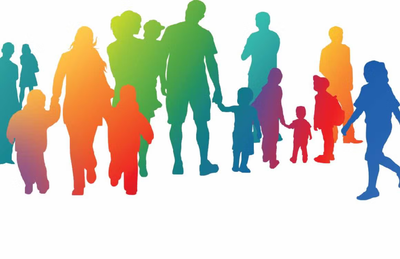
Our Lady & St Sebastian's Catholic Church
Liasion Person. Bishop Alex Ryder
email: fatheralexryder@gmai.com
If you are concerned about the welfare of a child or adult at risk, do not delay in contacting the police, using 999 if a child or adult is believed to be in immediate danger.
It is the policy of Our Lady & St. Sebastian’s Cathoilc Church report all allegations of abuse to statutory authorities, regardless of whether the abuse occurred recently or in the past, or whether the accused person is living or deceased.
If you are in any role within Our Lady & St. Sebastian’s, you must refer allegations directly to the Police.
What is Safeguarding?
“St. Sebastian’s Independent Catholic Church is striving towards a culture of safeguarding where all are safe from harm and abuse and where every person is encouraged and enabled to enjoy the fullness of life in Jesus Christ through the prayerful, caring, nurturing, supportive and protective endeavours of the Catholic community, both individually and collectively.”.
(Towards a Culture of Safeguarding 2012).
Safe Guarding useful originations
Children can call helplines such as ChildLine (0800 11 11) or the NSPCC National Helpline (088 800 5000) free, at any time, for information and confidential advice about all types of problems.
Childline’s
Child line’s website offers a free and confidential helpline for children and young adults in the UK. It offers help and advice plus volunteering and fundraising details: https://www.childline.org.uk/
There4me.com
NSPCC’S Confidential online service for young people age 12 to 16 www.there4me.com/
What We Believe
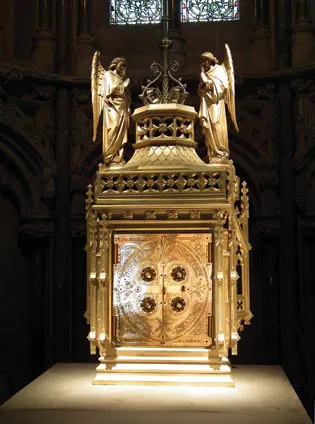
How can I know for sure that God exists when I cannot see him?
Take a look around you. Maybe you are at a computer screen, and you have just flicked through emails or various websites. Outside it’s pouring with rain but there’s a glimmer of sunshine in the distance. Cars going past, police-sirens wailing, something’s cooking in the kitchen and the waft is seeping up your nose. You feel a little anxious because you haven’t done that assignment and there’s something good on telly in ten minutes’ time.
A typical experience for many of us! But how has it got anything to do with the existence of God?
Thinking it through…
“How can I believe in God when just last week I got my tongue caught in the roller of an electric typewriter?” Woody Allen once asked. An extreme example to illustrate a quite serious point: we are not always thinking about God’s existence. Everyday (or not-so-everyday!) occurrences constantly crop up that stop us thinking about such ‘big questions’ as “Who am I?”, “What is the purpose of my life?”, “Is there purpose in my life?”, “Why is there so much pain and suffering in the world?”.
But the fact that you have been able to even ask these types of question tells us a very important thing: we are able to think and reflect about our surroundings. Even apes can’t do that…
And doing so means that we can think about how we got here in the first place.
But I’ve never seen God…
Some people say, “God cannot be proved, so he cannot exist”. That’s a weak argument. If I have not been to America, does that mean America is not there? I rely on others to inform me. What about great acts of love? Can I ‘see’ the love? No, what I see (for example) is a mother looking after her child, a couple walking slowly together, a heroic act to grab someone from a fire. These are acts of love. I cannot ‘see’ love, but I can deduce it from observing such acts.
We know that God exists because we can detect the signs in the universe. There is an overall order to things. That cannot be put down to chance. And how did it all begin? With God!
Apart from thinking about God’s existence from the signs of his presence in the world, we can also reflect on our own deepest longings. All of us, deep down, crave happiness, contentment, joy, fulfilment and peace. Yet our lives are often so unhappy, they lack contentment, the joys can be fleeting, and our fulfilments left wanting. This is, harsh as it may seem, a normal experience. We are made for nothing less than a life of total fulfilment in God. The great Saint Augustine of Hippo once said that, “You have made us for yourself, O God, and our hearts are restless until they rest in you” (Confessions, 1,1). The Christian faith tells us that we are never going to be completely happy on this earth. Instead, by turning in faith and trust to Christ, he will satisfy our deepest longings in a mysterious way.
The Big Bang theory and God
God is the creator of everything. The ‘Big Bang’ theory is a good hypothesis of what could have happened when God created the universe. And it was a Catholic priest, Mgr Georges Lemaître, who proposed it!
But no matter how the universe and everything in it developed, something or someone must have put it there in the first place. We call that something or someone ‘God’.
https://youtu.be/s4CRvAPzxjI
For Your Name Is Holy - I Enter The Holy of Holies - Paul Wilbur - Lyrics - YouTube
Links
vocation
- All
- Formation and Education
- How do I Know God is Calling Me?
- The Call to Priesthood
- What do I next?
- What is God intending for me? Each vocation is a call to follow Christ. The lifestyle and demands of each particular vocation are very different, but there are some common threads. Each vocation is a commitment to love in a certain way, and to draw closer to others – whether that closeness is through marriage or service or prayer. Each vocation challenges us to live our faith more deeply and to follow Christ more closely. Each vocation, if it is lived generously, will involve times of deep happiness and joy. Each vocation, if it is lived faithfully, will almost inevitably involve moments of great suffering and sacrifice. We should not think that one vocation is easier than another. Genuine love always costs a great deal, and brings great rewards. In one sense, to make a commitment to lifelong celibacy as a priest or consecrated person seems like a more radical choice, because it pulls us away from the natural joys of family life. But to live an authentic Christian marriage today, and to uphold Christian values in family life, requires enormous courage and commitment – it ‘costs’ as much, if not more, than celibacy. It is not wise to compare the value of different vocations, but to appreciate the value of each one, and to discover which one is right for you. The important thing is to set out for yourself and see. (Photo: mazur/catholicchurch.org.uk)
- Steps in Discernment
- Training
- Prayers for Vocations
Why Sacraments?
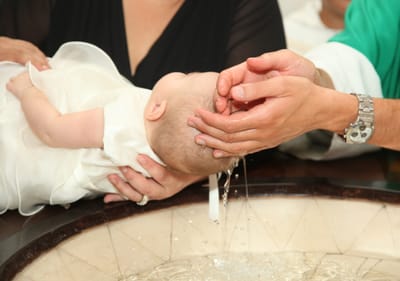
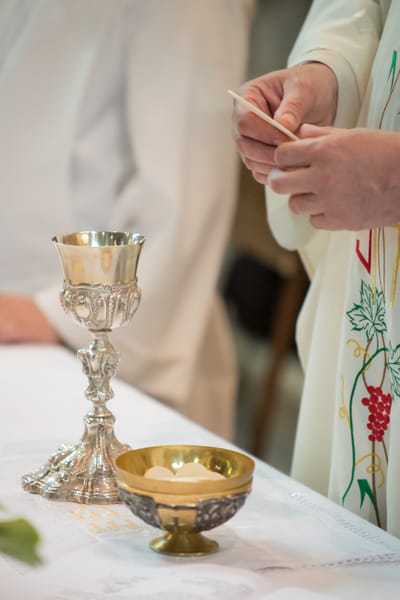
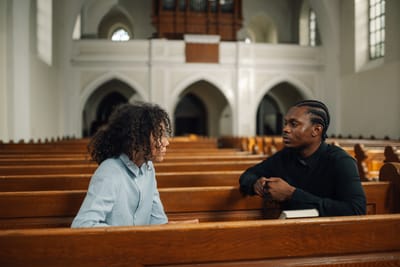
What's up with Sacraments? Find out by listening to the 24-minute audio presentation above.
What the Saints say about the Sacraments
The Sacraments are the salvation of those who use them rightly, and the damnation of those who misuse them.
- St. Augustine
No one is sanctified except him who is united to the Church.
- St. Prosper of Aquitaine
The Church is built on the rock of Peter, and he who eats the Lamb outside this holy dwelling is reprobate .... He who eats the Lamb outside this Apostolic See has no part with God!
- Bl. Pope Pius IX
Whoever eats the Lamb outside this House is profane.
- St. Jerome
Baptism
https://youtu.be/wv5GyWJaQ-Q
Holy Eucharist
https://youtu.be/QcB7Uem00n4
Reconciliation
https://youtu.be/CDyMHg8HkSE
Confirmation
https://youtu.be/Lu3MoT_egFI
Holy Matrimony (Marriage)
https://youtu.be/yjwPsZaK4Do
St patrick's seminary
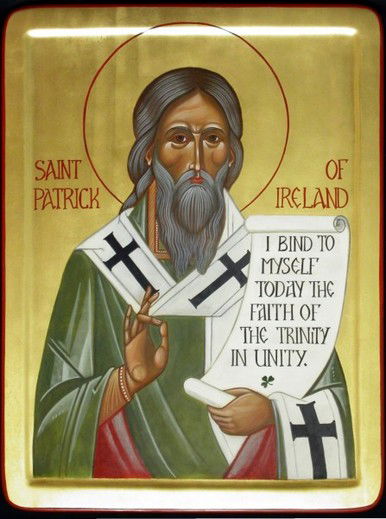
Confessional Training
This will be with your mentor, who will ‘role-play’ some scenarios that you may encounter when hearing confessions.
Spiritual Leadership
You will need to develop your own style, but every priest is a Spiritual leader and guide. Watch other priests taking worship, celebrating Eucharist, or dealing with people. Try and learn as much as you can from observing what and how they do it.
Public Speaking
Skill You will need to be able to speak competently in public, for example to speak when leading worship or taking meetings. Practice this skill with your mentor, and you will be assessed on this.
Skill at Holding a Service
You will need to be able to competently hold services of Mass, Benediction and Services of Blessing. Practice doing this at home and with your mentor; you will be assessed on this.
Prayer Delivery
You will need to be able to lead others in prayer, and to be able to pray in public and when others are listening to you. Practice this in your own home but take each opportunity that arises to pray openly in public.
Study Units
You will need to answer all the following questions unless exemption is granted by virtue of prior learning or experience. The preferred method is word-processed document or email as they can be done at any time and sent to your mentor for assessment, however those with special needs may be able to deliver their answers verbally.
Study One – Salvation
So, what exactly is Salvation?
1. ‘We are each responsible for our own salvation’. Comment.
2. How much does our belief of salvation drive us to be ‘our brother’s keeper’?
3. Christ made the ultimate sacrifice for our salvation. Discuss
4. If we are 'saved' can we 'lose' our salvation?
Is Salvation a response? Or a reward?
5. Is salvation a reward for a sinless life?
6. Argue for and against salvation being a response to our belief in Jesus.
7. How does the contemporary world view salvation?
8. How can we bring others to salvation? And should we, do it? Discuss.
Study Two – Confession
1. How will you prepare yourself to hear a confession?
2. A confessional commands the utmost confidentiality. During a confession, you hear something very serious indeed which is either a crime that has been committed, or one soon to be committed. How will you decide: What, How much, Who to and the manner in which you divulge anything, whilst keeping confidence and also acting in a safeguarding role?
3. Is a corporate, congregational confession less effective or worthy than a private confession?
4. Write an essay as a commentary on the following: ‘If we say we have no sin, we deceive ourselves and the truth is not in us, but if we confess our sins God will forgive us’.
Study Three – What does 'Real Presence' mean?
1. Give an outline of what is happening during Mass.
2. Many Protestant, Evangelical or Pentecostal Christians deny the Real Presence as understood by many Catholics. Yet they will recount Jesus’ words saying: ‘Wherever one or two are gathered in my Name, I will be there with them’. Explore the differences and similarities between these views.
Study Four - Church
-in general
1. Explain the role of scripture in the mass.
2. Explain why a priest should be present at mass. Is communion among friends less effective if a priest is not there?
3. We are called to baptise those who Christ calls. Is total immersion the only way to baptise? Explain using examples from the Bible and your own experience.
-about OLSSCC
4. How can the Theology of Salvation be brought in Healing (Unction)?
5. In an essay, describe how healing works.
6. How does the Holy Spirit empower in sacrament?
7. Being a priest is about the sacramental; being a pastor is about practical serving: is it as simple as that?
8. The church’s liturgical year carries what significance for the modern priesthood?
Study Five - The Practical Priesthood
1. Aren’t priests and deacon’s the same thing? You answered this in the pastors training course. How do you answer now?
2. When someone has come to you for help or advice, when and how do you involve others in this duty of care?
3. Expound the concept of 'care of souls' and explain how you will exercise this in your priesthood.
4. Upon ordination, you will be a priest forever. Why is this?
5. Explain what each vestment is and the meanings of the vestments. What secular roles wear vestments? How are vestments different from uniforms
Upon reaching a suitable point; after prayer and discussion with your mentor and your bishop, an appointment to the priesthood will be made. A date will be set for an ordination service and a licence outlining the ministry which will be followed. Our Lady & St Sebastain’s Catholic Church will then support and encourage that serving and support you in it.
Learning never ends, being a priest is always a 'work in progress' and you will be no different. 'We never arrive but the joy is in the journey....' Patriarch Kieran OLSSCC.
what is mass/eucharist
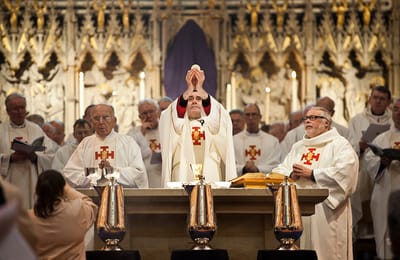
What is the Mass/Eucharist
What is the Mass?The Mass (the Eucharist) is “the source and summit of the Church’s life”. In it, Christ is really, truly and substantially present under the appearances of bread and wine. Catholics listen to the Word of God and receive Christ’s Body and Blood, miraculously transformed from bread and wine, at Holy Communion. The Fathers of the Second Vatican Council describe the Mass in the following way: At the Last Supper, on the night when He was betrayed, our Saviour instituted the eucharistic sacrifice of His Body and Blood. He did this in order to perpetuate the sacrifice of the Cross throughout the centuries until He should come again, and so to entrust to His beloved spouse, the Church, a memorial of His death and resurrection: a sacrament of love, a sign of unity, a bond of charity, a paschal banquet in which Christ is eaten, the mind is filled with grace, and a pledge of future glory is given to us (Sacrosanctum Concilium 47). At Mass, the sacrifice of the Cross is renewed in an “unbloody manner”, as the memorial of Christ’s death. The liturgy of the Mass is itself divided into two parts. The first part is the liturgy of the Word, in which we listen to Christ speaking in the Scriptures. The second part is the liturgy of the Eucharist, where the sacrifice of Calvary is renewed. Strictly speaking, however, the entire Mass is one sacrifice. That is why it is sometimes called the “Sacrifice of the Mass”. (Photo: Mazur/CatholicChurch.org.uk)
Read More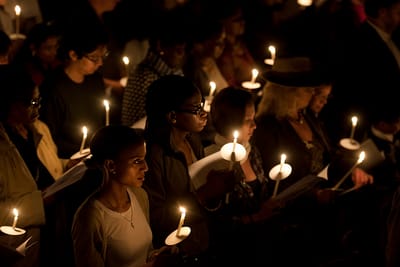
The Mother of All Vigils
The Rev. Father Christopher Matthews, the Diocesan Master of Liturgical Ceremonies, reflects on the symbolism of the Easter Triduum ‘May the light of Christ rising in glory dispel the darkness of our hearts and minds.’ These are the words of the priest on Holy Saturday as the paschal candle is lit at the great Easter Vigil. The Easter Vigil has often been described as The Mother of all vigils; it is in so many ways the highlight of the Church’s year. The Easter Vigil is the culmination of the week that tells the story of Christian salvation. That week begins with Palm Sunday, the blessing of palm branches and a procession into church. Here at The Cathedral, that procession is lead by a donkey, a reminder of the way Christ entered the City of Jerusalem in great triumph, the people waving palm branches in celebration. We continue to wave branches as we enter the church building that day in great joy, a joy that soon turns sombre as we hear the reading of the Passion narrative. We leave the church that day knowing what the week ahead holds, we’ve already heard a synopsis of what is to come. In our diocese, we gather together with our Bishop on the Wednesday of Holy Week to celebrate the Chrism Mass. It is an occasion of great joy, as the whole diocese, people, priests, deacons and religious gather together as the Sacred Oils, to be used through out the diocese in the coming year, are consecrated. The occasion is also the time for the priests to renew their dedication to serve the people of our diocese. They resolve to continue to be faithful ministers of God’s Word, to celebrate the Eucharist and to imitate Jesus Christ the Head and Shepherd of the Church. This Mass is in many ways the model celebration of the Eucharist; the Bishop surrounded by the presbyterate, the deacons and people of the Diocese, the local Church gathered around the table of God’s Word and the table of the Eucharist to be nourished. The following day brings us to the great Triduum, which begins with the Mass of the Lord’s Supper on Holy Thursday. This is the first part of a three part drama that runs until the end of the Easter Vigil. The atmosphere for the Mass of the Lord’s Supper, although joyful, is some what muted. There is a dignity about the celebration as the Washing of the Feet unfolds, recalling us to Saint John’s Gospel and Christ’s message to his disciples, and to us, ‘I have given you an example so that you may copy what I have done to you.’ (John 13:15) A reminder to us all, that our faith is one of service to others, we are each called to put our faith into action, to bring the Lord’s love to bear on the world in which we live. The Mass of the Lord’s Supper draws to a close as the Blessed Sacrament is carried in solemn procession from the altar to a place of repose. There the Lord rests as we watch, waiting, praying. Part two of the drama takes place on Good Friday. As we arrive in church to celebrate the Lord’s Passion we are struck by the stark bareness, the building stripped of all its adornment, the flowers are gone, banners taken down, the altar bare. As the Roman Missal reminds us ‘On this and the following day, by a most ancient tradition, the Church does not celebrate the Sacraments at all, except for Penance and the Anointing of the Sick.’ (page 346). The day is one of fasting and abstinence. All the outside distractions are removed to allow us to reflect, and focus, on the great act of love that Jesus carries out for each and everyone one of us, it was His love for us that held him to that tree. Today’s liturgy is particularly solemn; as we drift back out into the sunlight, we do so quietly, subdued by the experience of venerating that cross that becomes the tree of life. The final act of this three part drama takes place after dark on Holy Saturday. As the paschal candle is carried into a darkened church, the light beginning to spread and cast away the shadows, we hear the ancient hymn of rejoicing, the Exsultet, and so the scene is set for this Mother of all Vigils to take us on a journey through salvation history. A story we only understand in the light of the Risen Christ, and that is symbolized by the paschal candle taking its place right next to the ambo, its light illuminating the scriptures for us. This is the night we celebrate that the Lord has truly risen, risen to bring us new life. Many books, articles, tweets, and blogs have been written about Holy Week and the great symbolism of the liturgies that mark the week. None of these words can ever fully express the atmosphere, sights and sounds of this great week, they have to be experienced. I hope you seize the opportunity to do so. This article first appeared in the Lent/Easter 2012 edition of the Shrewsbury Catholic Voice
Read MoreOrdinary Time
Today we resume regular time. Indeed, this weather has two sides. The first begins the Monday following the Feast of the Lord's Baptism and runs until the day leading up to Ash Wednesday. The second begins today, the Monday after the solemnity of Pentecost, and will run until the Saturday leading up to the 1st Sunday of Advent. Ordinary Time consists of 33 or 34 weeks, depending on the year. The way to count the weeks is: 1. - The week in which the Lord's Baptism is celebrated is the first week. The following weeks are counted in progressive order until the start of Lent. 2. - After Pentecost, there are two options: a) If the weeks in Ordinary Time are 34, take the series again from the week following the one that was interrupted with the start of Lent. For example, if in the V week in Ordinary Time falls on Ash Wednesday, the Monday following Pentecost will be Monday of the VI week in Ordinary time. b) If the weeks in ordinary time are 33 omit the week after which it was interrupted with the beginning of Lent, and resume the series in which follows the omission. For example, if in the V week in Ordinary Time falls on Ash Wednesday, the Monday following Pentecost will be Monday of the VII week in Ordinary time. This second is what happens in this 2022, because we were in week VIII of ordinary time when Lent began, and being 33 weeks, we omitted IX, and resumed in X.
Read MoreINTERCOMMUNION AGREEMENTS'
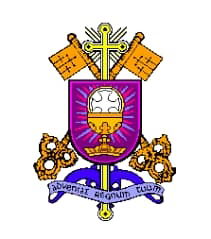
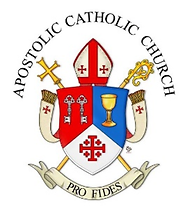
⛪ Eglise Catholique Libérale Unie
⛪ Apostolic Catholic Church
Prayer and spirituality
Prayer and Spirituality
Prayer is a vital and personal relationship with the living and true God. It takes many forms, but, through the “raising of the mind and the heart” to our Creator, we remain in communion with him. God unceasingly calls us to this encounter with him, and the prayer of mankind has risen to heaven throughout the history of salvation. Abraham prayed, Jacob “wrestled with God”, Moses implored on behalf of the people, King David prayed, lamenting his sins and in praise of the Lord. The prophets prayed, “zealously seeking the face of God” (Catechism of the Catholic Church 2595), the people of God prayed. In the Old Testament, the Psalms are the masterpiece of all. They are suitable for people of all times and places. In the New Testament, the prayer of Christ is the model of all prayer. In a loving adherence to his Father’s will, Christ teaches us how to have an attitude of great trust in how we pray. He also answers all prayers addressed to himself. The prayers of the Virgin Mary are characterised by her loving obedience in the Fiat and the offering of her whole being in faith in the great hymn of the Magnificat. The Church comes together collectively to pray and worship God. This is very often in the context of liturgy, or public prayer of the people. But we must also learn to pray as individuals, so as to nurture the life-giving relationship that God wishes to extend to us.
Read More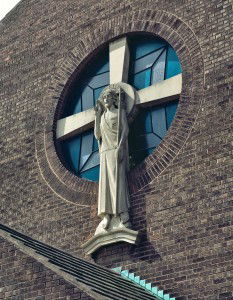
Faith and Spirituality
I believe in one God The Catholic faith is the body of belief held by Catholics. It has been revealed in the life, death and resurrection of Jesus Christ, the Son of God, who leaves it for us as our means of salvation. Speaking to his Father in the power of the Holy Spirit just before he died on the Cross, Christ exclaimed, “Father, … this is eternal life, that they may know you, the only true God, and Jesus Christ whom you have sent” (John 17,3). Such knowledge is the purpose of every Catholic’s existence. It is left to the Church as the deposit of faith, consisting of everything taught to the apostles by Our Lord and passed on by the same apostles. Built on the foundation stones of Saint Peter and the apostles, with Christ as the cornerstone, and commanded by Our Lord to, “Go and make disciples of all nations, baptizing them in the name of the Father and of the Son and of the Holy Spirit” (Matthew 28,19), the Church has a divine mandate to pass the faith on, to catechise, in a way that is faithful to the Tradition established by Christ and guaranteed by the Magisterium of the Church to be true. The knowledge that the Catholic faith gives is not, however, a merely intellectual knowledge. More importantly, it gives us a living relationship with Jesus Christ. Through soaking ourselves in the faith of the Church, we become holy, and inspired to live not just for ourselves but for God and for our neighbour. This is the purpose of our existence. We also know, through the gift of faith, that this earthly life is a preparation ground for the bliss of heaven. So knowing God by faith can inspire us to live for him at every moment, despite the problems we all face, because we know that he is waiting for us in heaven. And the good news is that all men and women are destined for heaven, where, as Saint Augustine of Hippo said, “There will be no more sorrow or trials”, and where we will see God face-to-face. Faith offers us the exciting prospect of conversing with God, in learning and understanding his ways. When we start on this journey God reveals himself little by little, teaching us that he is close. In fact, our faith tells us, God is so close that he actually lives within us. In this section, many topics are introduced. The aim is not to give an exhaustive account, but rather to offer an introduction to the main teachings of the Church. Links are also provided to external sites where you can find out more. Indeed it is worth bearing in mind the reason why it is a good idea to think about what we believe: we need to understand our tradition in order to dialogue with today’s culture. Photo from English Martyrs’ Church, Wallasey, courtesy of Alex Ramsay.
Read More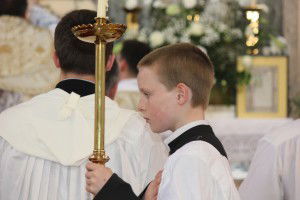
Liturgy
The word Liturgy literally means work of the people, within the Catholic Church it is used to describe all the public acts of worship that take place, as it draws the people into the work of God. Liturgy is in many ways the public face or shop front of the Church, it is through the liturgy that people engage with the faith and deepen their relationship with God. ‘Liturgy is not an event that depends on good ideas and great songs. No one makes up or invents a liturgy. It is something that grew over millennia of faith.’ YOUCAT (paragraph 167) Liturgy is the divine worship of the Church and includes the celebration of Mass, the celebration of the Sacraments, and the Divine Office or Daily Prayer of the Church. The celebration of the Eucharist is the source and summit of our faith, and so all other liturgies flow from and to the celebration of Mass. Liturgy is not just the words that are said, it is much much more than that. Through the liturgy we encounter God, and our united with our brothers and sisters across the world as the Universal Church. Over these pages each of the major liturgies of the Church will be explored. (Photo: St Gabriel News and Media)
Read MoreWhy do bad things happen?
A young child with leukemia… a mother struggling to make ends meet with no-one to help her… people caught in earthquakes, tornadoes… the innocent victims of injustice, at school, at home. These are just some examples which might suggest that God lets people suffer pointlessly. We could think of many more similar instances.
And it’s a good point … surely a good and powerful God would not let all the bad things happen? If God is who he is supposed to be (all-powerful, all-loving), then why is it that life is so hard and even unjust at times? It makes no sense!
The honest truth here is that ‘the problem of evil’, as it is called, remains a mystery.
That’s not a cop-out though. A mystery is not something that is incomprehensible; rather, it is something that cannot be explained on purely rational grounds. “Life is a mystery”, Madonna (as in the singer) once sung. She’s right. But that doesn’t mean that life is not worth trying to understand. Including the seemingly-irrational ‘problem of evil’.
We have the choice
Now, natural evil (earthquakes, sickness etc) and moral evil (sin) both exist in our experience, but were not there at creation.
Adam and Eve’s taking of the fruit really messed things up. And God allowed it to happen! That is both the cause and the solution of our problem. God’s gift of free will to us is so great because it makes us great. You can read elsewhere about what it really means to be free. Through our freely-chosen responses, we can mature and actually come closer to each other and to God.
And so: we don’t know why natural evils occur when they do, upsetting lives as they can do. Indeed one must never underestimate the great suffering that many people go through on a daily basis – unanswered prayers, untimely deaths through car accidents or illnesses, broken relationships, hardships at work or at home. In faith, we are able to grasp that this life is a kind of pilgrimage back to our heavenly home. Through the sufferings that we encounter, we can become purified in preparation for the life that really matters (heaven). Sufferings can produce opportunities for the greatest expressions of love. .
Take the world pandemic (COVID) literally the world came to a standstill. People were not able to leave their homes go to work to see family members and friends. They wern't even able to see their loved ones before they died. They could only see them either through a window or by live streaming. Doctors, nurses, paramedics and key workers held their hand when they died. People when they able help each other with food and drink. People weren’t allowed to attend their places of work, Socialise and even attend their church Services.
We have also have the war happing in Ukraine. People’s homes have been destroyed, and they have had to try escape their country to safety. They must shelter in basement's when bombs are been dropped. They pray and when they can celebrate their Eucharist together in these basement's. Once again people have been struggling to escape the war to other countries. Humanitarian aid are trying to help them escape this is humanitarian crisis.
And they came together, in all the various ways, to bring help, support, love to this crushed people.
How Christ helps
Without going into too much philosophy, we can say that the apparent failure of God to do anything about evil is actually overcome by the death and resurrection of Christ on the Cross. So if we try and stay close to Christ, by getting to know him and imitating him, he will show us the way through all our problems. That is because there is nothing that we suffer which Christ has not suffered first. We are not alone because Christ carries our sufferings even now, on the Cross!
God does not want bad things to happen as such. He simply allows them to take place; we have the opportunity, if we freely choose to do so, of ‘offering up’ our sufferings – whatever they are – to Christ. In turn, he uses them for his own good purposes.
Don’t forget – Christ is just as much God as is the Father, since he is a divine person with a human nature. Somehow, through his own loving acceptance of his Father’s will, in the power of the Holy Spirit (who is also fully God) He overcame all the sin in the world, and as a result brings us with him to salvation, if only we will accept him.
To find out how to accept Christ more personally, it would be worth reading about the power of prayer.
And sin too: even sin can be used to good purpose! This is not a reason to go out and bash your best friend or worst enemy over the head. But the point is, we can learn from our mistakes. Learn what? When we recognise how we have sinned, we experience remorse. But we can in fact use this painful experience to make a decision to do better next time. Gradually, we realise that a much better way is to choose to follow Christ, who heals the deepest divisions of all – those within our very selves.

Holy Year 2025
Who is God?
Who is God?
Is God an old man with a beard sitting in the clouds surrounded by choirs of harp-playing angels? Or is he a stern figure looking down from on high, waiting angrily for us to slip up? Many people think that he is like that, or something similar. It is hardly surprising then, that there’s a lot of confusion out there about God’s identity. It is easy to form our own ideas about him without basing those thoughts on what is actually reasonable. We can get a little bit suspicious, especially if we have come from a Catholic background where, for example, we feel that we were forced to go to Mass as a child. The chances are that our idea of God will be through the lens of a childhood duty to please our parents, or to do as we are told. We may well look a little bit suspiciously at God and everything to do with him. So just what, or who, is God? To start with, God is not just ‘there’, as a kind of impassive mover, like a watchmaker winding everything up and letting it run. Above all, God is a person. And people relate to one another. Therefore, God relates to me. It is perhaps this fact about God that causes so much difficulty today: we cannot see him, so how can anyone relate to him, especially if he is so stern? God is love Christians believe that God is love. That means that he has an interest beyond himself. We see that above all in the doctrine (teaching) about the Trinity. The Trinity is the central Christian doctrine. It teaches us that God, as love, is Father, Son and Holy Spirit: three Divine Persons, distinct from one another, yet one God. God, since he made us, knows what it is like to be human. And he loves us. And he loves us so much that he has decided to “get involved”, as it were, to get us all back to live with him forever. He does that by coming as Man. And so the Son comes as one of us, a divine person with a human nature – fully God, fully man – as Jesus Christ. So when we are talking about Christ, we are talking about God. His task was to free us from our sins and give us the possibility of inheriting everlasting life. He did that by dying on the Cross and rising again. Building a relationship with God We get to know Christ in many ways: in the sacraments, in the Bible, in each other. The more we make use of the sacraments, familiarise ourselves with the Bible, and work for the good of other people, the more we know and love Christ. Much of the above takes faith and hard work. We are dealing with a mystery, but not irrationality. We begin our journeys back to God by becoming his children through baptism into the Church, his body on earth. In the Church we are given the best possible chance of getting to know and deepening our love for him who so wants us with him. So our faith tells us that God was made visible in the Person of Christ Jesus. That is to say, God is most definitely not an old man in the clouds, but someone who bridges the gap between eternity and time and becoming one with us, one of us. Is God an old man with a beard sitting in the clouds surrounded by choirs of harp-playing angels? Or is he a stern figure looking down from on high, waiting angrily for us to slip up? Many people think that he is like that, or something similar. It is hardly surprising then, that there’s a lot of confusion out there about God’s identity. It is easy to form our own ideas about him without basing those thoughts on what is actually reasonable. We can get a little bit suspicious, especially if we have come from a Catholic background where, for example, we feel that we were forced to go to Mass as a child. The chances are that our idea of God will be through the lens of a childhood duty to please our parents, or to do as we are told. We may well look a little bit suspiciously at God and everything to do with him. So just what, or who, is God? To start with, God is not just ‘there’, as a kind of impassive mover, like a watchmaker winding everything up and letting it run. Above all, God is a person. And people relate to one another. Therefore, God relates to me. It is perhaps this fact about God that causes so much difficulty today: we cannot see him, so how can anyone relate to him, especially if he is so stern? God is love Christians believe that God is love. That means that he has an interest beyond himself. We see that above all in the doctrine (teaching) about the Trinity. The Trinity is the central Christian doctrine. It teaches us that God, as love, is Father, Son and Holy Spirit: three Divine Persons, distinct from one another, yet one God. God, since he made us, knows what it is like to be human. And he loves us. And he loves us so much that he has decided to “get involved”, as it were, to get us all back to live with him forever. He does that by coming as Man. And so, the Son comes as one of us, a divine person with a human nature – fully God, fully man – as Jesus Christ. So, when we are talking about Christ, we are talking about God. His task was to free us from our sins and give us the possibility of inheriting everlasting life. He did that by dying on the Cross and rising again. Building a relationship with God We get to know Christ in many ways: in the sacraments, in the Bible, in each other. The more we make use of the sacraments, familiarise ourselves with the Bible, and work for the good of other people, the more we know and love Christ. Much of the above takes faith and hard work. We are dealing with a mystery, but not irrationality. We begin our journeys back to God by becoming his children through baptism into the Church, his body on earth. In the Church we are given the best possible chance of getting to know and deepening our love for him who so wants us with him. So our faith tells us that God was made visible in the Person of Christ Jesus. That is to say, God is most definitely not an old man in the clouds, but someone who bridges the gap between eternity and time and becoming one with us, one of us. Is God an old man with a beard sitting in the clouds surrounded by choirs of harp-playing angels? Or is he a stern figure looking down from on high, waiting angrily for us to slip up? Many people think that he is like that, or something similar. It is hardly surprising then, that there’s a lot of confusion out there about God’s identity. It is easy to form our own ideas about him without basing those thoughts on what is actually reasonable. We can get a little bit suspicious, especially if we have come from a Catholic background where, for example, we feel that we were forced to go to Mass as a child. The chances are that our idea of God will be through the lens of a childhood duty to please our parents, or to do as we are told. We may well look a little bit suspiciously at God and everything to do with him. So just what, or who, is God? To start with, God is not just ‘there’, as a kind of impassive mover, like a watchmaker winding everything up and letting it run. Above all, God is a person. And people relate to one another. Therefore, God relates to me. It is perhaps this fact about God that causes so much difficulty today: we cannot see him, so how can anyone relate to him, especially if he is so stern? God is love Christians believe that God is love. That means that he has an interest beyond himself. We see that above all in the doctrine (teaching) about the Trinity. The Trinity is the central Christian doctrine. It teaches us that God, as love, is Father, Son and Holy Spirit: three Divine Persons, distinct from one another, yet one God. God, since he made us, knows what it is like to be human. And he loves us. And he loves us so much that he has decided to “get involved”, as it were, to get us all back to live with him forever. He does that by coming as Man. And so, the Son comes as one of us, a divine person with a human nature – fully God, fully man – as Jesus Christ. So, when we are talking about Christ, we are talking about God. His task was to free us from our sins and give us the possibility of inheriting everlasting life. He did that by dying on the Cross and rising again. Building a relationship with God We get to know Christ in many ways: in the sacraments, in the Bible, in each other. The more we make use of the sacraments, familiarise ourselves with the Bible, and work for the good of other people, the more we know and love Christ. Much of the above takes faith and hard work. We are dealing with a mystery, but not irrationality. We begin our journeys back to God by becoming his children through baptism into the Church, his body on earth. In the Church we are given the best possible chance of getting to know and deepening our love for him who so wants us with him. So, our faith tells us that God was made visible in the Person of Christ Jesus. That is to say, God is most definitely not an old man in the clouds, but someone who bridges the gap between eternity and time and becoming one with us, one of us.
Bible
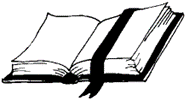
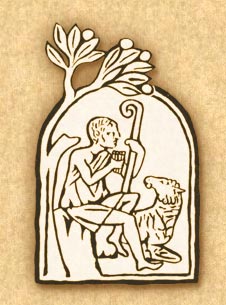
https://www.usccb.org/offices/new-american-bible/study-materials
https://www.usccb.org/bible/understanding-the-bible
https://www.usccb.org/offices/new-american-bible/liturgy
https://www.usccb.org/offices/new-american-bible/study-materials
CATECHISM OF THE CATHOLIC CHURCH
https://www.vatican.va/archive/ENG0015/_INDEX.HTM
Compendium OF THE CATECHISM OF THE CATHOLIC CHURCH
https://www.vatican.va/archive/compendium_ccc/documents/archive_2005_compendium-ccc_en.html
CODES OF CANON LAW
https://www.vatican.va/archive/cdc/index.htm
ECUMENICAL COUNCILS
https://www.vatican.va/archive/hist_councils/index.htm
OFFICIAL ACTS OF THE HOLY SEE |
| https://www.oikoumene.org/ |
https://www.vatican.va/archive/atti-ufficiali-santa-sede/index_en.htm
JUSTICE & PEACE
COMPENDIUM OF THE SOCIAL DOCTRINE OF THE CHURCH
https://www.vatican.va/roman_curia/pontifical_councils/justpeace/documents/rc_pc_justpeace_doc_20060526_compendio-dott-soc_en.html
We Participate
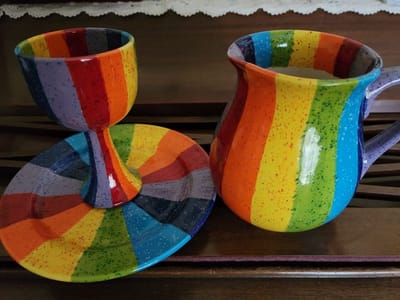
- Your participation in ministry represents your appreciation of all the ways that God has shown you love, mercy, peace and in incorporation into the body of Christ.
Think of the Body of Christ as a building. In order for a building to become a home for someone to live in, many different things have to take place. The foundation has to be poured. Walls need to be erected. A roof has to be put on. Plumbing and electricity have to be installed. Storage and furniture have to be placed inside. All that is necessary for a building to become a home, as we know it.
None of that takes place on its own, nor does one person do it. A lot of work goes into building a home, work that is done by many different people who are all gifted in different ways. Concrete workers, framers, and roofers, electricians, plumbers, cabinet and furniture makers, as well as painters, people to lay the floor, and those who design the interior – all these people and more must contribute in order for a building to become a home.
Something similar has to happen in the church. We all must use our gifts to build up the body of Christ. We all need to be actively engaged in the area of ministry with which Jesus has called us. We all have gifts and talents. How can you share yours with Christ the Good Shepherd? - Lector
Prayer and spirituality
Data Protection
Privacy Notice1.
INTRODUCTIONThe Our Lady & St Sebastian’s Catholic Church (OLSSCC). In this Notice, references to ‘we’ and ‘us’ mean the Church (OLSSCC).When you provide us with Personal Data in order to engage with us and/or benefit from our activities, we will keep a record of the data you give to us in order to enable us to comply with our statutory obligations and to achieve our charitable objects of advancing and maintaining the OLSSCC religion through the operation of our parishes and our other activities.For the purpose of the General Data Protection Regulation 2016/279 (GDPR), the Church through its Trustees will be a Data Controller in respect of your Personal Data. In some cases, the Church may be a joint Data Controller of your Personal Data (e.g. where your data is shared between the Church and another organisation for a particular purpose, for example a school or another Church). Please be aware that our parishes form part of the Church and are not separate legal entities. Parishes are not Data Controllers nor do they process Personal Data on behalf of the Church as a Data Processor.Everyone has rights with regard to how their Personal Data is handled by organisations. The Church is committed to ensuring that Personal Data is properly and securely managed in accordance with the relevant data protection laws and believes this is an important part of achieving trust and confidence between the Church and those with whom it interacts. Please read this Notice to understand how we use and protect the information that you provide to us or that we obtain or hold about you, and to understand what your rights are in relation to information that we hold. This Notice applies to information about living identifiable individuals only.2. WHAT PERSONAL DATA DO WE HOLD ABOUT YOU?We may hold the following types of Personal Data:name and contact details;gender, age, date of birth, marital status and nationality;information about your education/work history and professional qualifications;information about your family and any dependants;information about your current involvement in Diocese activities and events;financial information (e.g. bank details) and details of any donations you have made to us in the past;information obtained as a result of any background checks on volunteers;CCTV recordings and photographs;information we collect through your use of our website(s) andany other information which you choose to provide to us or that we are provided by others.We may also hold Special Categories of Personal Data e.g. information about your religious beliefs, information about your health and wellbeing, information revealing racial or ethnic origins, information concerning your sexual orientation or in the case of background checks, information about criminal records or proceedings.We may also receive Personal Data about you from third parties, for example, your family members, other parishioners, other Churches, medical professionals, the police and other law enforcement bodies.3. HOW AND WHY DO WE PROCESS YOUR PERSONAL DATA?The Personal Data which we hold about you, whether it is collected directly from you or whether we receive it from a third party, may be Processed in a number of ways, for example:to communicate with you in relation to news about or activities and events taking place in the Church or in any Church parish, including seeking feedback and informing you of any changes to our activities;to improve our activities and the way we communicate with you including our website or the website of any parish;to carry out our activities, from weddings and funerals to general pastoral and spiritual care;to process donations that you may make to us or other payments where, for example, you hire facilities belonging to the Church;to administer, support, improve and develop the administration of the Church’s work and operations and to keep the Church or any parish’s accounts and records up-to-date;to process applications from you, including grant applications and applications for a role within the Church;to identify potential additional sources of fundraising, such as identifying those eligible to make Gift Aid nominations and other forms of wealth screening;for audit and statistical purposes (e.g. for the annual audit undertaken by the Bishops’ Conference of UK and Eire);to ensure we comply with our legal obligations (e.g. by providing information to the Charity Commission or HMRC or carrying out safeguarding activities);in the case of CCTV recordings, to prevent or detect crime, and to help create a safer environment for our staff, parishioners and visitors; and4. ANY OTHER WAYS.Any information gathered through cookies and similar technologies via the OLSSCC website or the website of any parish, is used to measure and analyse information on visits to the website, to tailor the website to make it better for visitors and to improve technical performance. We will not use the data to identify you personally or to make any decisions about you.5. ON WHAT GROUNDS DO WE PROCESS YOUR PERSONAL DATA?We must have a lawful basis for Processing your information; this will vary according to the circumstances of how and why we have your information but typical examples include:the activities are within our legitimate interests in advancing and maintaining the Catholic religion, in providing information about the activities of the OLSSCC or any OLSSCC parish, and to raise charitable funds (e.g. where we use baptism data to follow up with families for first communion);you have given consent (which can be withdrawn at any time by contacting us using the details below) for us to process your information (e.g. to send you marketing or fundraising communications by email or SMS);we are carrying out necessary steps in relation to a contract to which you are party or prior to you entering into a contract (e.g. where you enter into a hire agreement for one of our facilities);the Processing is necessary for compliance with a legal obligation (e.g. where we pass on information to a local authority for safeguarding or other reasons);the Processing is necessary for carrying out a task in the public interest (e.g. updating and maintaining the register of marriages); orto protect your vital interests (e.g. if you were unfortunate enough to fall ill or suffer an injury on our premises, then we may pass on information to the NHS for treatment purposes and to family members).If we Process any Special Categories of Personal Data we must have a further lawful basis for the processing. This may include:where you have given us your explicit consent to do so (e.g. to cater for your medical or dietary needs at an event);where the Processing is necessary to protect your vital interests or someone else’s vital interests (e.g. passing on information to the Police);where the Processing is carried out in the course of our legitimate interests as a Catholic Church working with and supporting our current and former parishioners and the information is not shared outside the Church other than with your consent (e.g. carrying out Church]s censuses);you have made the information public;where the Processing is necessary for the establishment, exercise or defence of legal claims;where the Processing is necessary for carrying out the Church’s employment and social security obligations; orthe processing being necessary for reasons of substantial public interest (e.g. where steps are taken to prevent fraud or other dishonest activity);provided that the legal basis is proportionate to the aim pursued and provides for suitable and specific measures to safeguard your rights, or as part of our legitimate interests as a Catholic Church. If we Process any Personal Data comprising criminal convictions or offences we must also have a further lawful basis for the processing. This may include:where the Church is exercising obligations or rights which are imposed or conferred by law on us or you in connection with employment, social security or social protection and the Church has an appropriate policy document in place (e.g. to undertake appropriate checks on individuals prior to taking up a role);where it is necessary for the prevention or detection of an unlawful act (e.g. passing on information to the Police or other investigatory body);where the Church is complying with or assisting others to comply with regulatory requirements relating to unlawful acts or dishonesty (e.g. passing on information to the Police or other investigatory body);where it is carried out in the course of safeguarding children or other individuals at risk e.g. making a safeguarding disclosure;where an individual has given their consent to the processing;where the Church is establishing, exercising or defending legal claims (e.g. providing information to our insurers or lawyers in connection with legal proceedings);where it is necessary to protect the vital interests of an individual (e.g. passing on information to the Police); orwhere it is carried out in the course of the Church’s legitimate activities as a not-for-profit body with religious aims (e.g. carrying out pastoral activities).6. WHO WILL WE SHARE YOUR INFORMATION WITH?We will only use your Personal Data within the Church for the purposes for which it was obtained, unless you have explicitly agreed that we may share your Personal Data with another organisation or unless we are otherwise permitted or required to under the Data Protection Rules or order of a Court or other competent regulatory body or as set out in this Notice.We may share your information with other members of the Church seeking relief and any ecclesiastical body enjoying canonical jurisdiction or powers of governance as detailed in the Code of Canon law or the Apostolic Constitution Pastor Bonus.We may share your information with government bodies for tax purposes or law enforcement agencies for the prevention and detection of crime.Sometimes the Church contracts with third parties whom we ask to Process Personal Data on our behalf (e.g. IT consultants, distributors of parish newsletters and directories). We require these third parties to comply strictly with our instructions and with the GDPR.We also may be required to share your Personal Data so that the Church can benefit from Gift Aid nominations you have made e.g. with HMRC.We have in place administrative, technical and physical measures designed to guard against and minimise the risk of loss, misuse or unauthorised processing or disclosure of the Personal Data that we hold.In the course of Processing your Personal Data, or disclosing it to the recipients referred to above, we may transfer it to countries which are outside the European Economic Area (EEA), some of which may not have laws which provide the same level of protection to your Personal Data as laws inside the EEA. In such cases we will take steps to ensure that the transfers comply with the GDPR and that your Personal Data is appropriately protected. We do so by taking the following measures:putting in place a contract with the recipient that means they must protect the personal information to the same standards as is required in the EEA;transferring it to a non-EEA country with privacy laws that give the same protection as the EEA;transferring it to organisations that are part of Privacy Shield (or any successor or replacement scheme). This is a framework that sets privacy standards for data sent between the US and EU countries to ensure that those standards are similar to what are used within the EEA;transferring it to organisations or countries that have other approved certification schemes or codes in place; or relying on another appropriate ground under applicable data protection laws.7. HOW LONG WILL WE KEEP YOUR INFORMATION FOR?Your information will be kept in accordance with our Retention & Disposal of Records Policy, copies of which are available from the Church’s Data Protection Officer. In any event, we will endeavour to only keep Personal Data for as long as is necessary and to delete it when it is no longer so.8. YOUR RIGHTSYou have rights in respect of the Personal Data you provide to us. In particular:the right to request a copy of some or all of the Personal Data that we hold about you (including, in some cases, in a commonly used, machine readable, format so that it can be transferred to other Data Controllers). We do not make a charge for this service;if we Process your Personal Data on the basis that we have your consent, the right to withdraw that consent;the right to ask that any inaccuracies in your Personal Data are corrected;the right to have us restrict the Processing of all or part of your Personal Data;the right to ask that we delete your Personal Data where there is no compelling reason for us to continue to Process it;the right to object to us Processing your Personal Data for direct marketing purposes e.g. in relation to fundraising carried out by the Diocese; andthe right not to be subject to legal or other significant decisions being taken about you on the basis of an automated process (i.e. without human intervention).Please note that the above rights may be limited in some situations – for example, where we can demonstrate that we have a legal requirement to Process your Personal Data. Also, we may need you to provide us with proof of identity for verification and data security purposes before you can exercise your rights.Rights may only be exercised by the individual whose information is being held by the Diocese or with that individual’s express permission. Children from around 12 years upwards are entitled to make their own requests (where the Churches is of the reasonable view that they have an appropriate understanding of the request they are making) and parents / guardian / family members do not have an automatic right to see information about their child or prevent their child from making a request to the Diocese.9. CHANGES TO THIS NOTICEWe may make changes to this Notice from time to time as our organisational practices and/or applicable laws change. We will not make any use of your personal information that is inconsistent with the original purpose(s) for which it was collected or obtained (if we intend to do so, we will notify you in advance wherever possible) or otherwise than is permitted by data protection laws.10. CONTACT DETAILSIf you have any questions, require further information about how we protect your Personal Data, if you wish to exercise any of the above rights, if you wish to opt out of receiving further communications from the Diocese or if you would like to provide feedback or make a complaint about the use of your information, please contact the Diocesan Data Protection Officer, His Eminence Cardinal Kieran O’ Neill Any complaints will be dealt with in accordance with the Church’s Complaints Policy.We hope that we can satisfy any queries you may have about the way in which we Process your Personal Data. However, if you have unresolved concerns you also have the right to complain to the Information Commissioner (‘ICO’) (www.ico.org.uk).11. COOKIESCookies, also known as browsers or tracking cookies, are small text files that are added to your computer when you visit a website. They help websites to perform certain functions e.g. to know who you are if you log into a restricted part of a website, for shopping carts, and for tracking purposes.The Church uses the following cookies:Google analytics. We use Google analytics cookies on the website for tracking purposes. The cookies allow us to understand general traffic to our website for example number of visitors and length of time on site. This process does collect data, but in an anonymous form, to help us make improvements, develop the website and enhance the user experience.Privacy preferences. We use a tracking cookie, which is added to your computer, to remember your cookie preferences i.e. if you have allowed or disallowed themRegister for events. We have the ability for you to register for events on the website. If you do so this information goes directly into our database. In order to register our database adds an essential cookie (reaction server) to your computer.12. MANAGE COOKIESIf you would like to opt-in or opt-out of using cookies then you should be able to do so using your browser. You can review your cookie settings at any time.Please note that you cannot opt-out of the deployment of cookies that are necessary for delivery of our website or services to visitors.13. COVID-19 TEST AND TRACEDuring these unprecedented times, we have a legal duty to protect and promote the welfare of our parishioners, staff, volunteers and our clergy.If an individual informs us that they have tested positive for COVID-19 or have symptoms of the virus we will notify you if you had been present with that individual at one of our Masses/events, so that you can take the necessary steps to protect yourself, your families and those who you have come into contact with.In this situation we will not seek your consent to share your data with the health authorities as there is a Public Interest for us to do so. Your contact details will only be shared with the Health Authorities if required and within the Church. We will keep a record of what information has been shared.What information about you do we collect?For the processing to which this notice relates, we collect the following information:personal information – your name, residential address, email address, mobile or landline numberspecial category personal information – such as information about virus symptomsHow do we collect information about you?Information is collected from parishioners who have booked to attend any Mass/event or from any existing parish database. Identified individuals may provide details of other people they have had contact with, who may in turn be asked for details of others they have had contact with.How will your information be used?Your information will be used to contact you and persons who you have stated you have had contact with.The legal basis for using your informationThe legal basis for which we use your information is that it is of substantial public interest and to protect public health.Who will your information be shared with?We sometimes need to share your information within the Diocese of Westminster or with the Health Authorities. We will only share your information when necessary and when the law allows us to, and we will only share the minimum information we need to. The Diocese will never sell your information to anyone else.How long will we keep your information?We will keep your information for a maximum of 1 month after the date of the Mass/event that you attended. 14. GLOSSARY“Data Controller” means a person, organisation or body that determines the purposes for which, and the manner in which, any Personal Data is processed. A Data Controller is responsible for complying with the data protection laws including the GDPR and establishing practices and policies in line with them.“Data Processor” means any person, organisation or body that Processes personal data on behalf of and on the instruction of the Diocese. Data Processors have a duty to protect the information they process by following data protection laws.“Data Subject” means a living individual about whom the Diocese processes Personal Data and who can be identified from the Personal Data. A Data Subject need not be a UK national or resident. All Data Subjects have legal rights in relation to their Personal Data and the information that the Diocese holds about them.“Personal Data” means any information relating to a living individual who can be identified from that information or in conjunction with other information which is in, or is likely to come into, the Diocese’s possession. Personal Data can be factual (such as a name, address or date of birth) or it can be an opinion (e.g. a performance appraisal). It can even include a simple email address. A mere mention of someone’s name in a document does not necessarily constitute Personal Data, but personal details such as someone’s contact details or salary (if it enabled an individual to be identified) would fall within the definition.“Processing” means any activity that involves use of Personal Data. It includes obtaining, recording or holding the information or carrying out any operation or set of operations on it, including organising, amending, retrieving, using, disclosing, erasing or destroying it. Processing also includes transferring or disclosing Personal Data to third parties.
++ His Eminence, Cardinal Kieran Thomas O’Neill MStJ, KGC,, DD., OSB

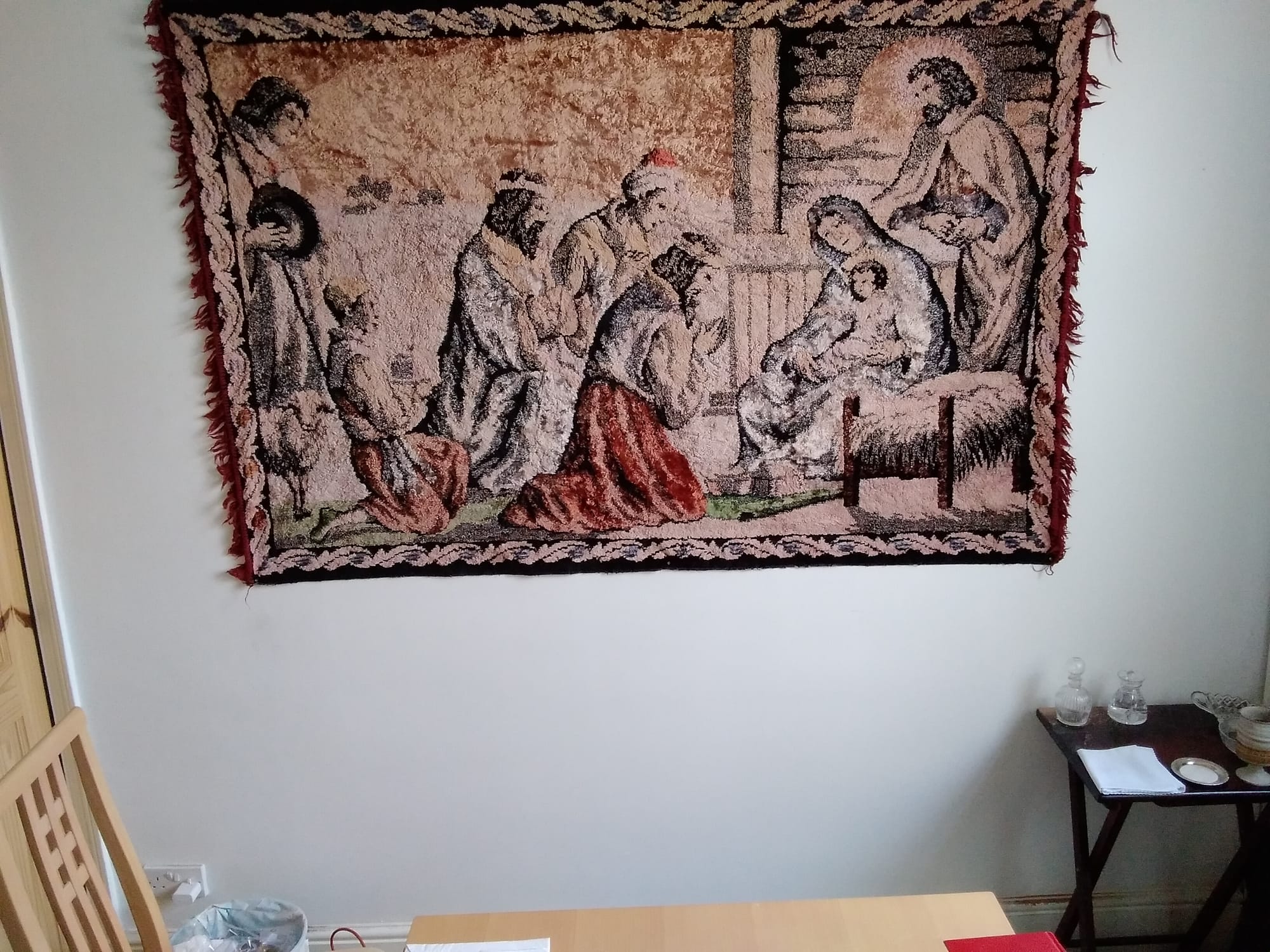
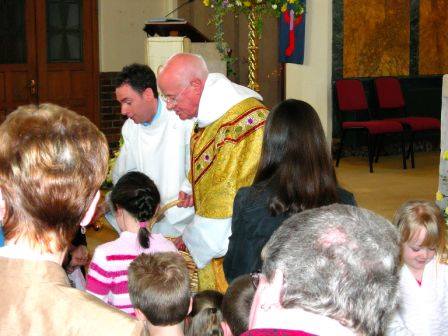
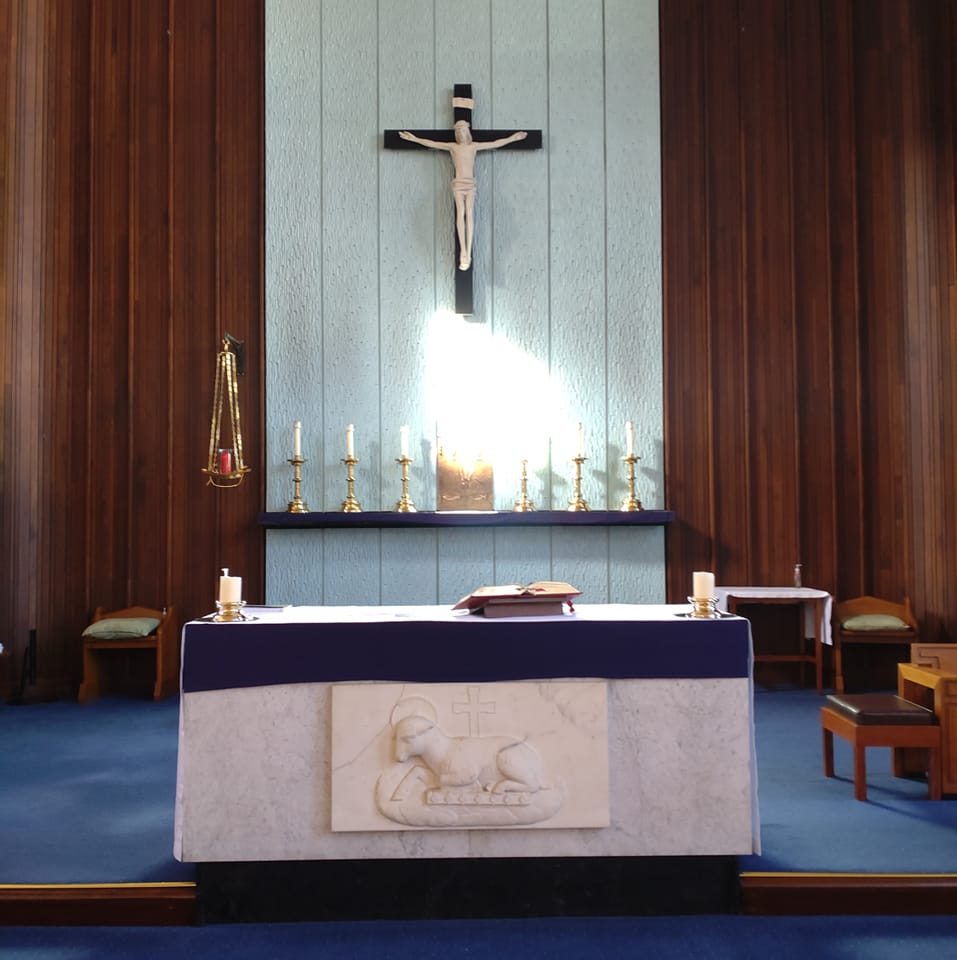
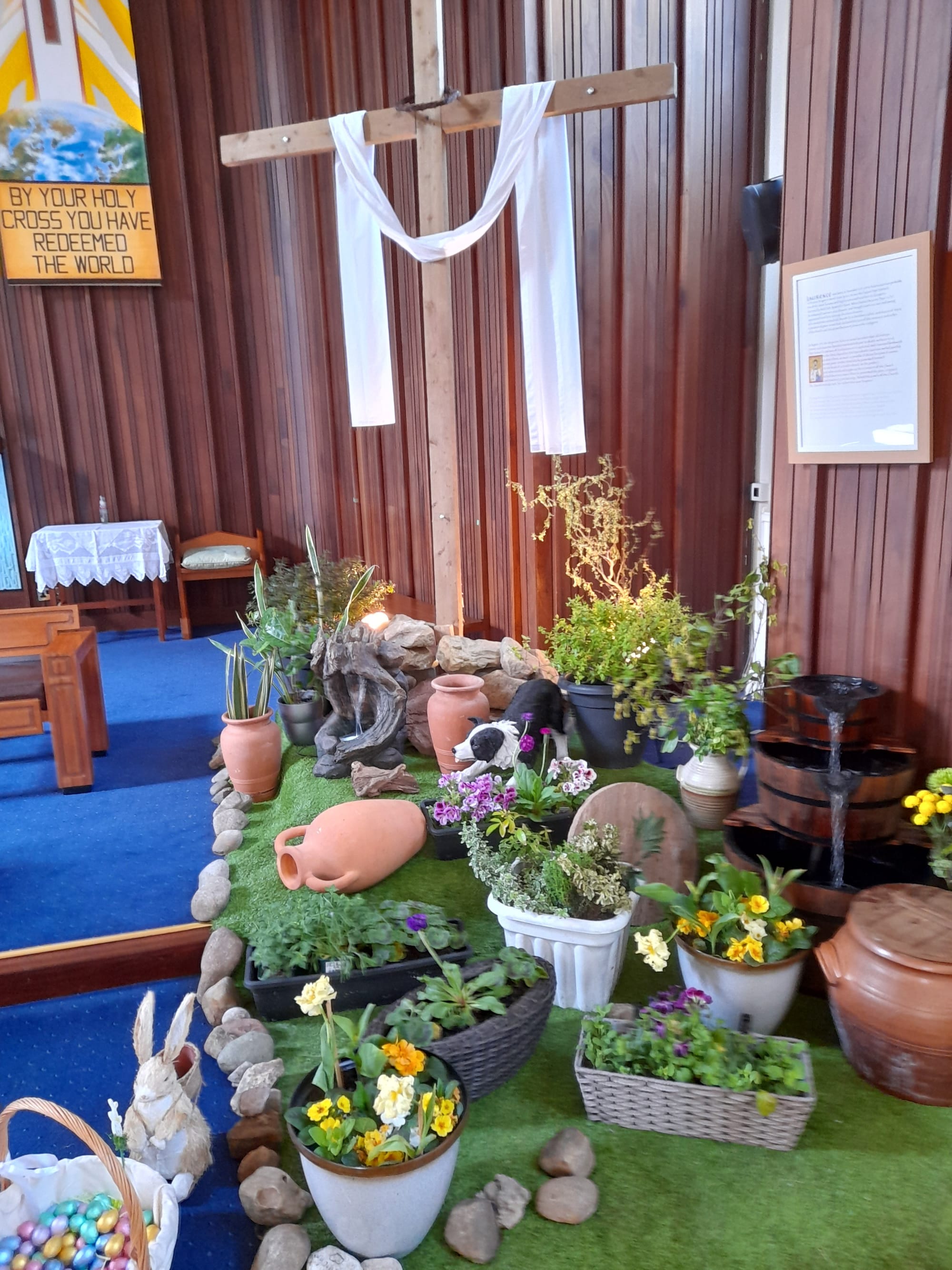
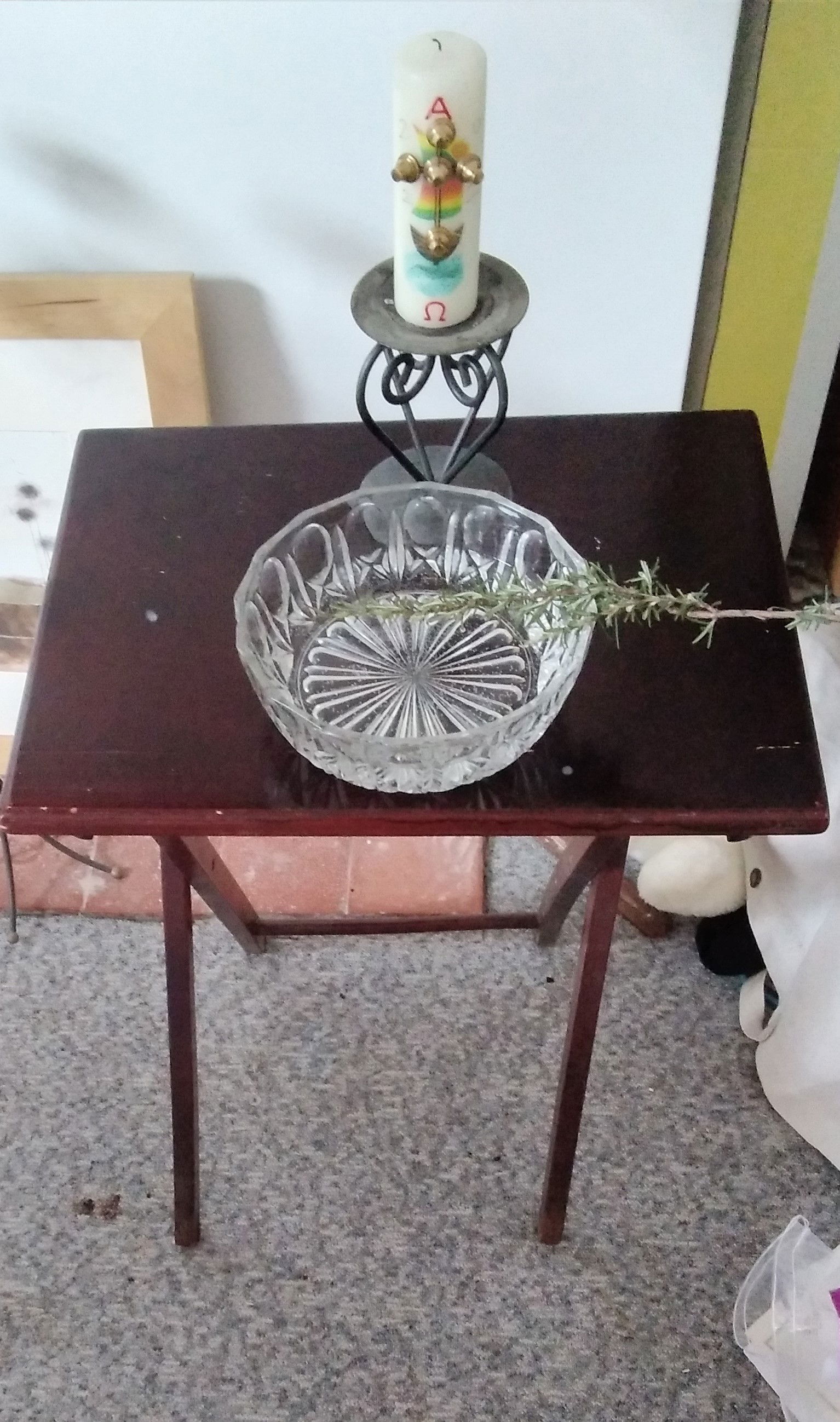
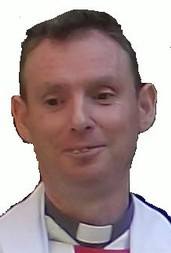

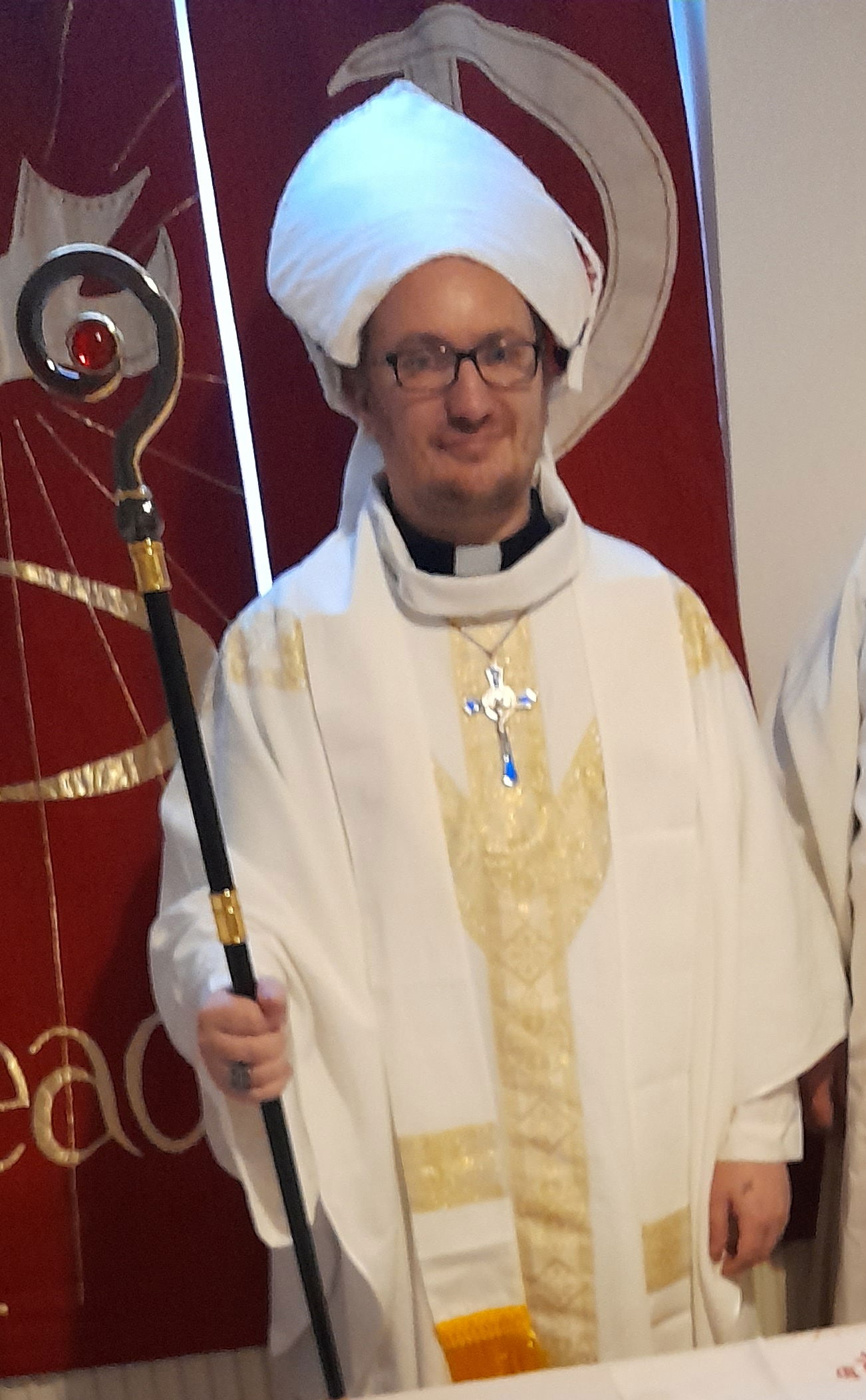
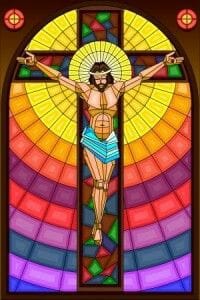

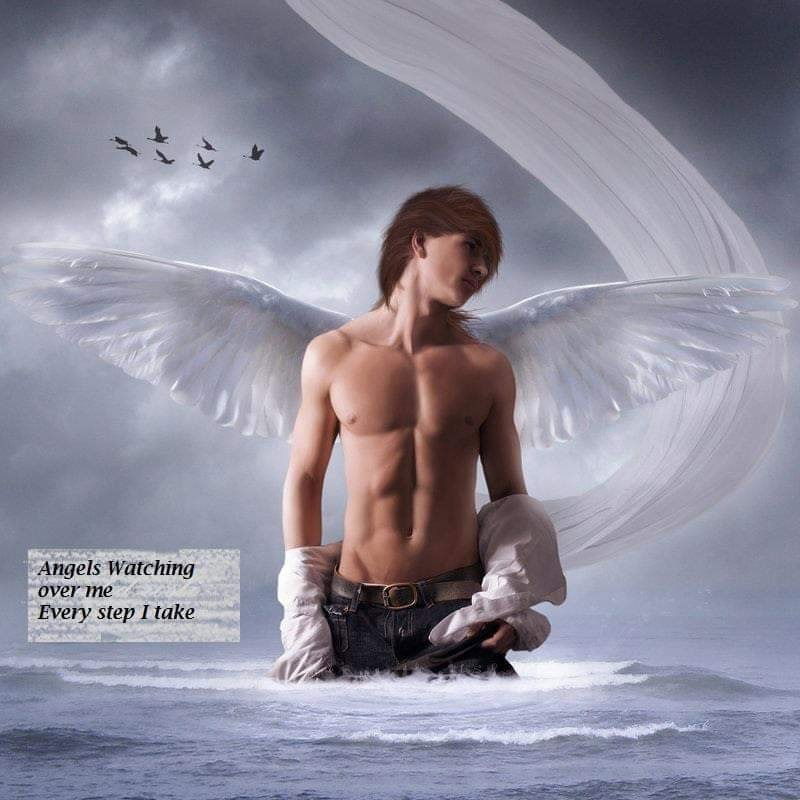
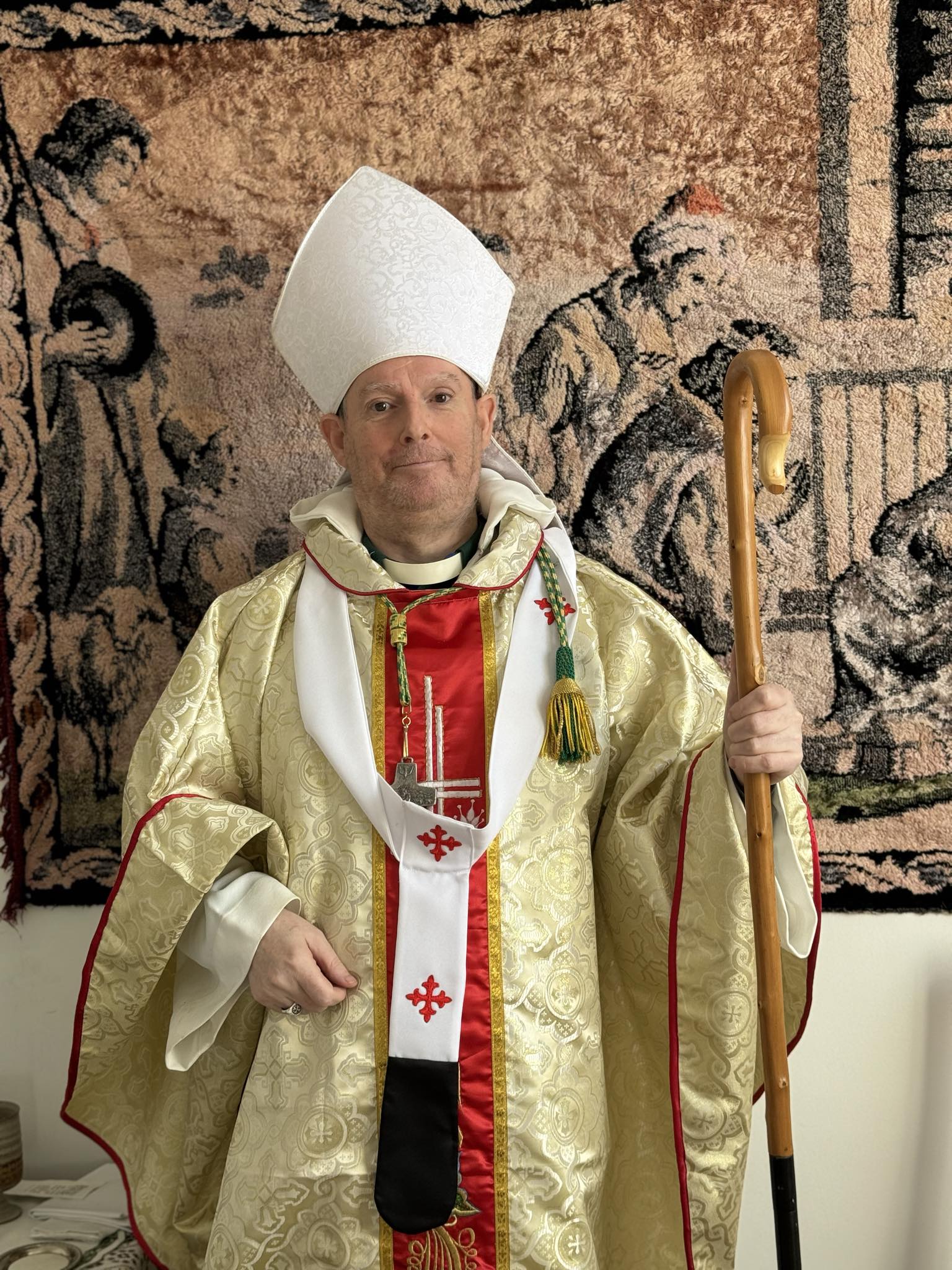
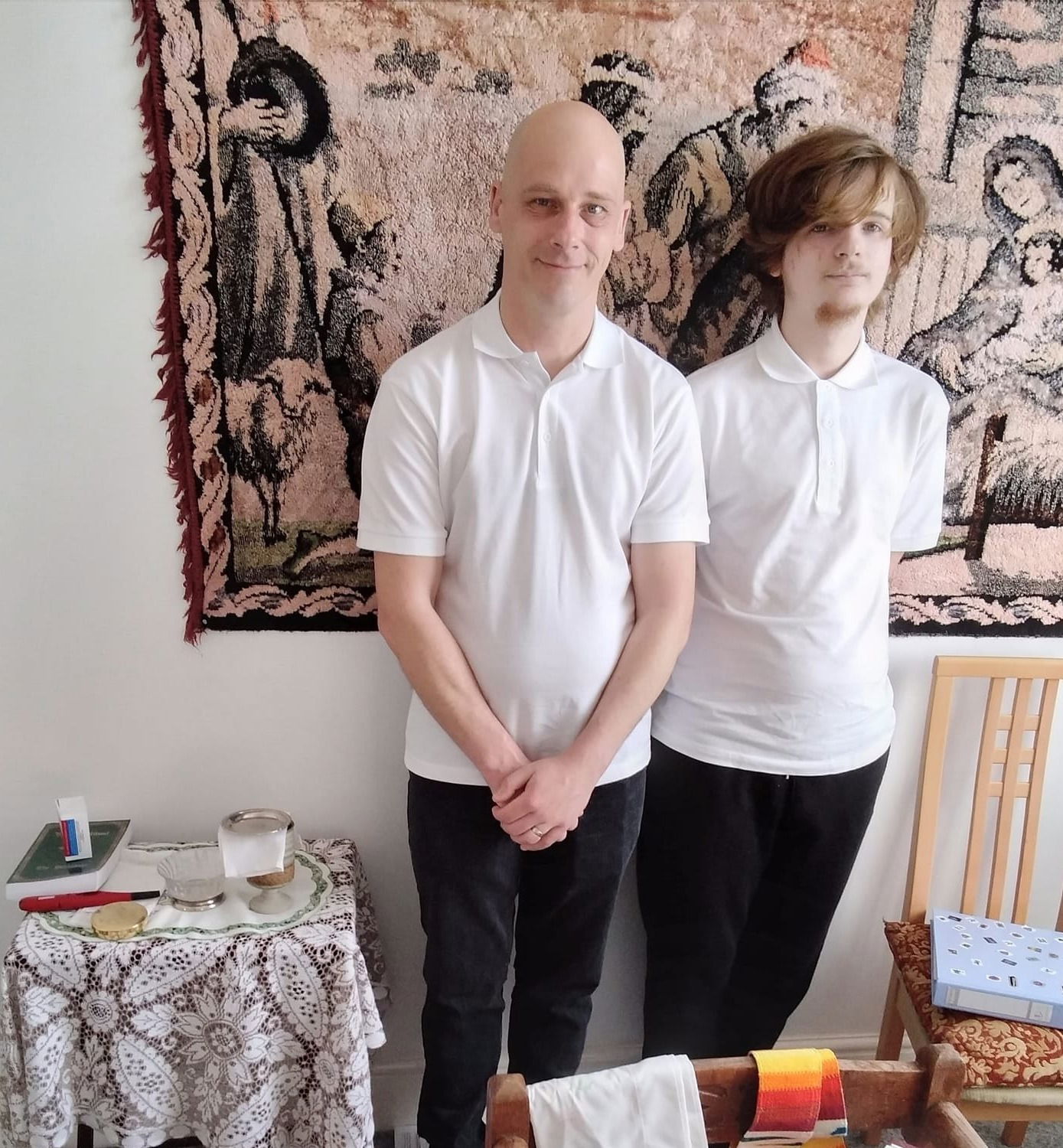
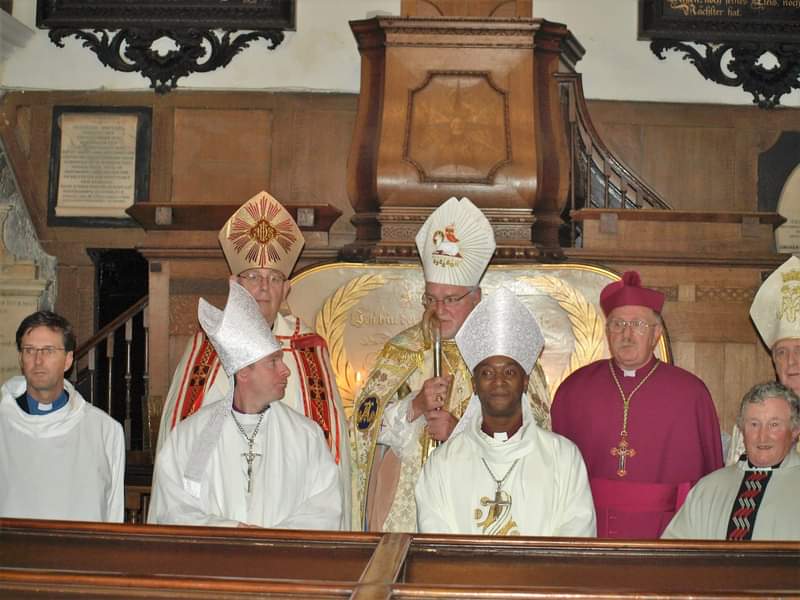
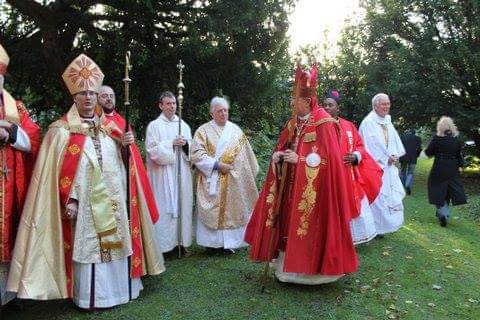
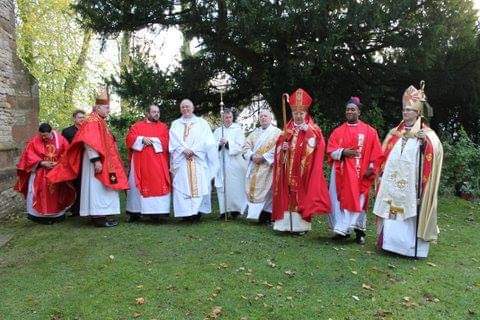

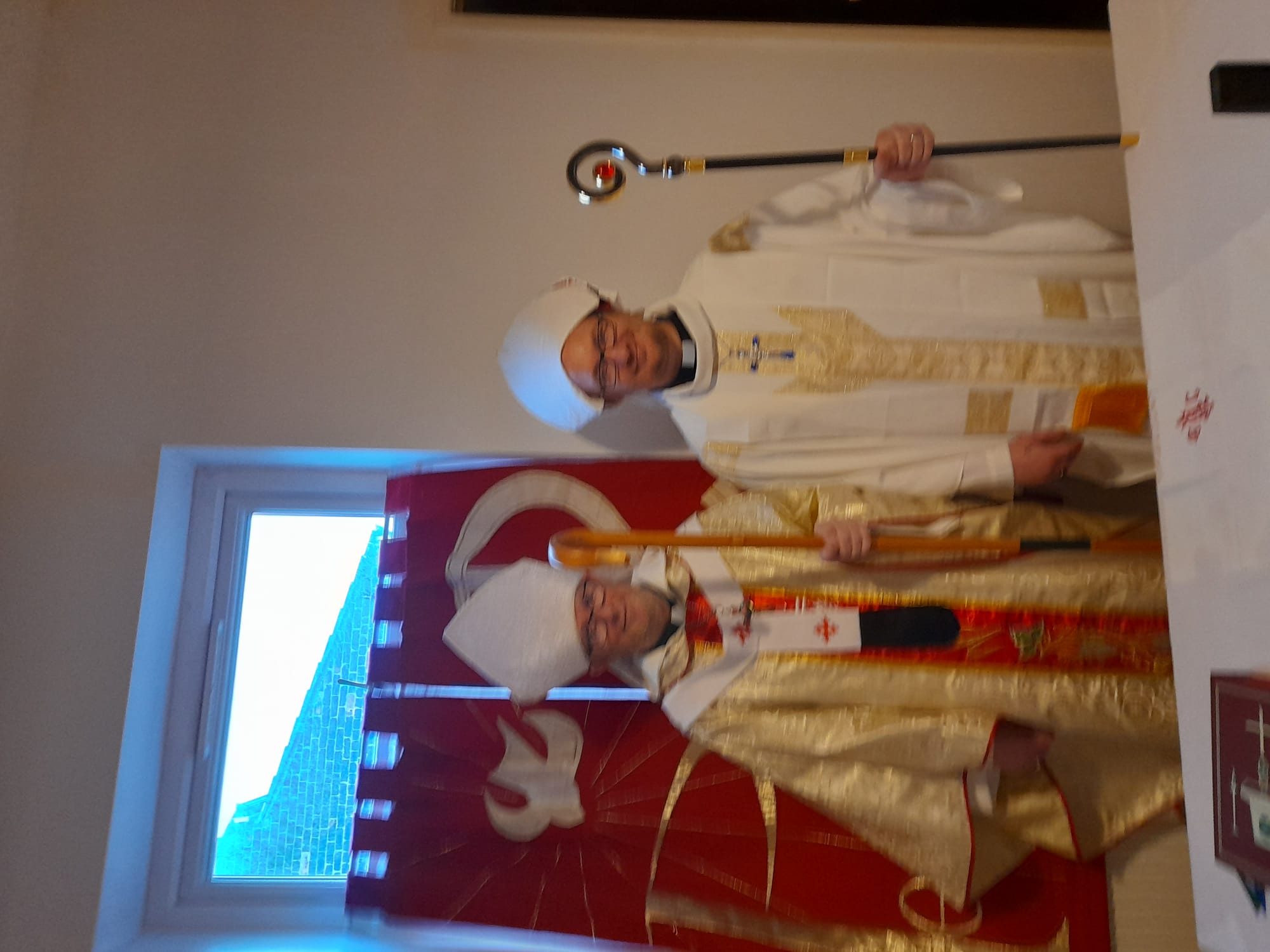
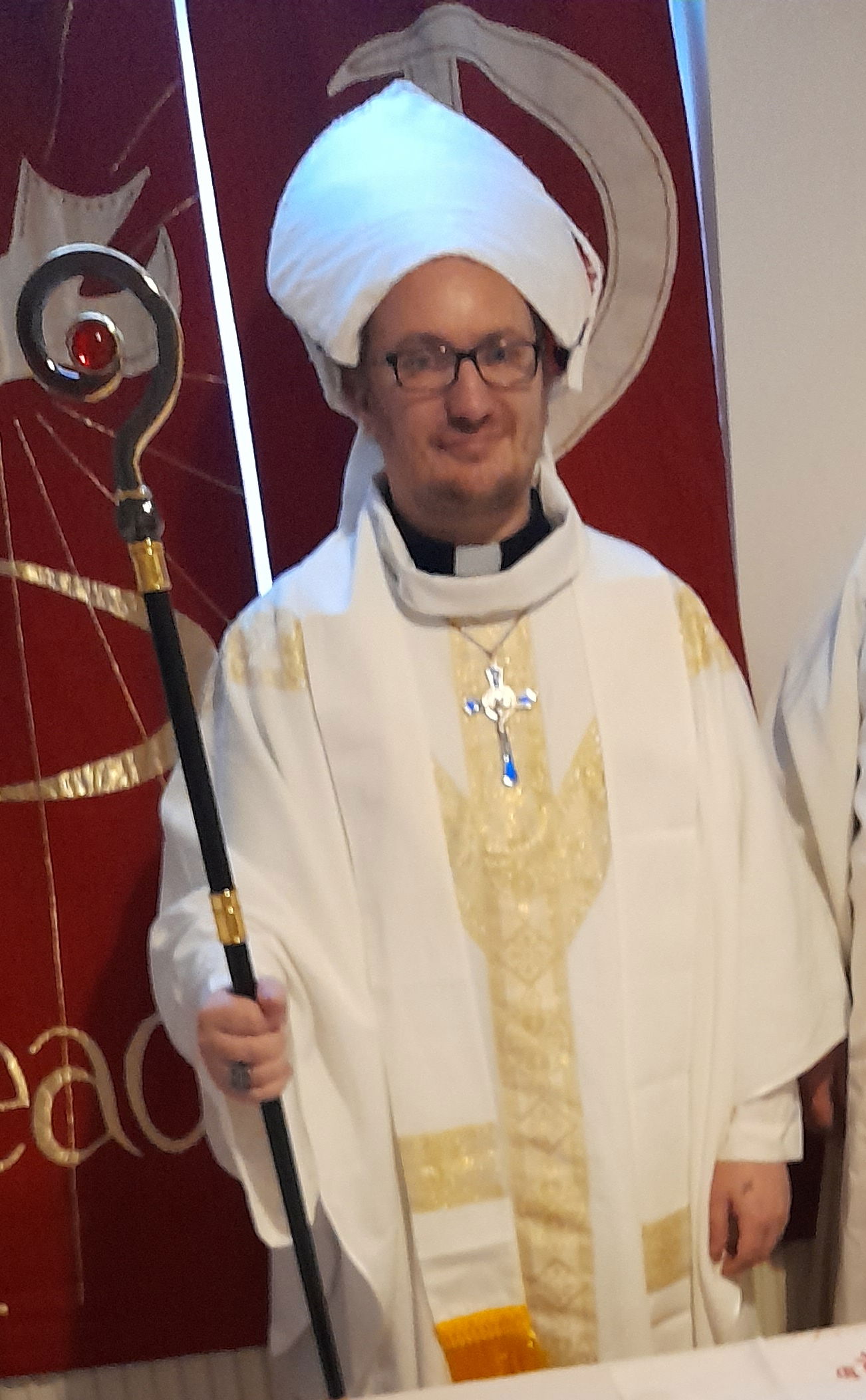
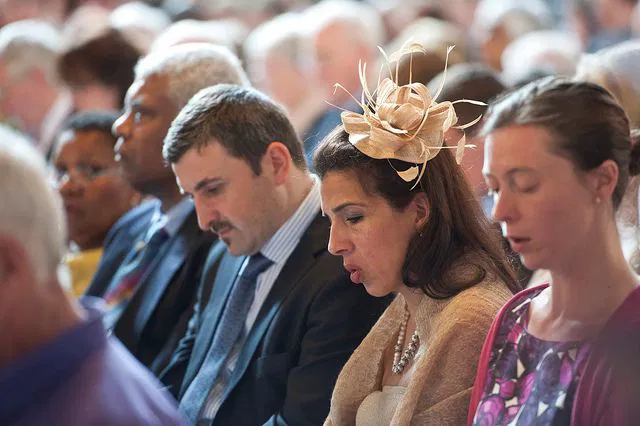
 What better way to help us than the example of the saints themselves? There are thousands upon thousands of them. Some are officially recognised by the Church to be in heaven: these are the ‘canonised’ saints.
What better way to help us than the example of the saints themselves? There are thousands upon thousands of them. Some are officially recognised by the Church to be in heaven: these are the ‘canonised’ saints.